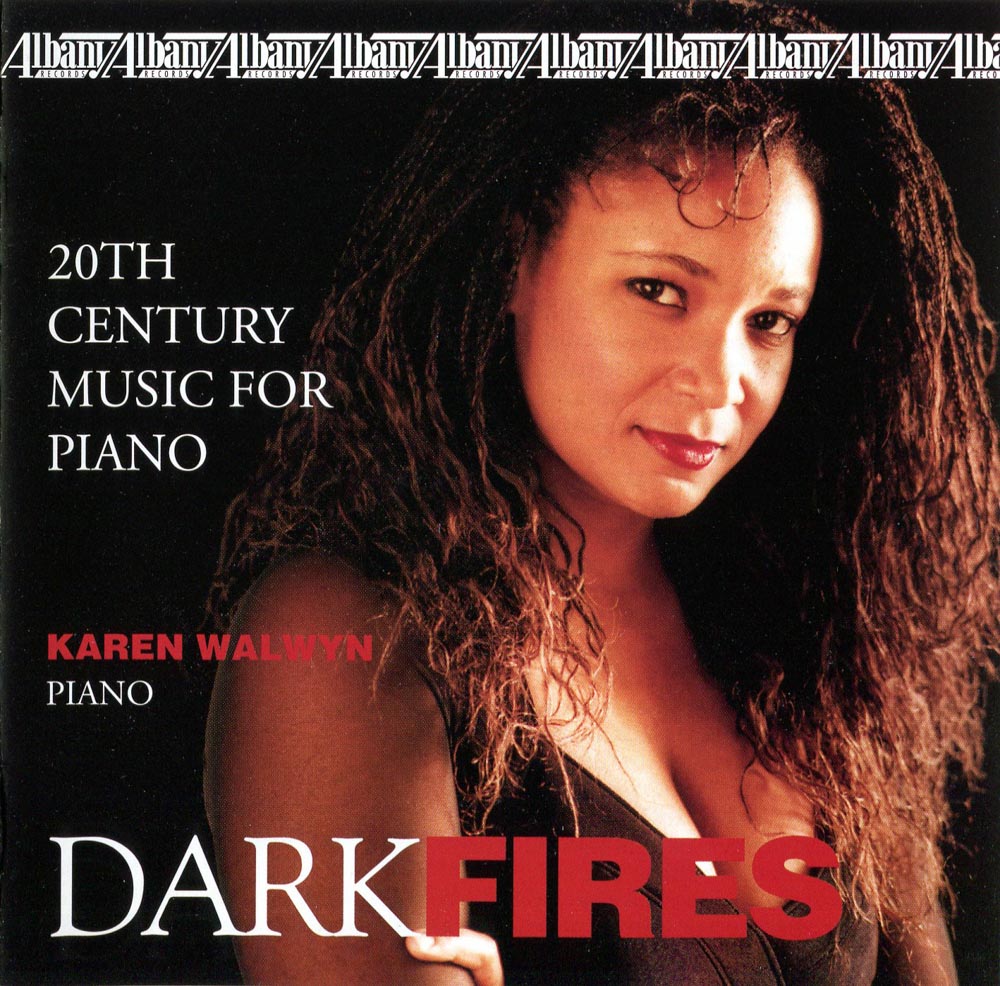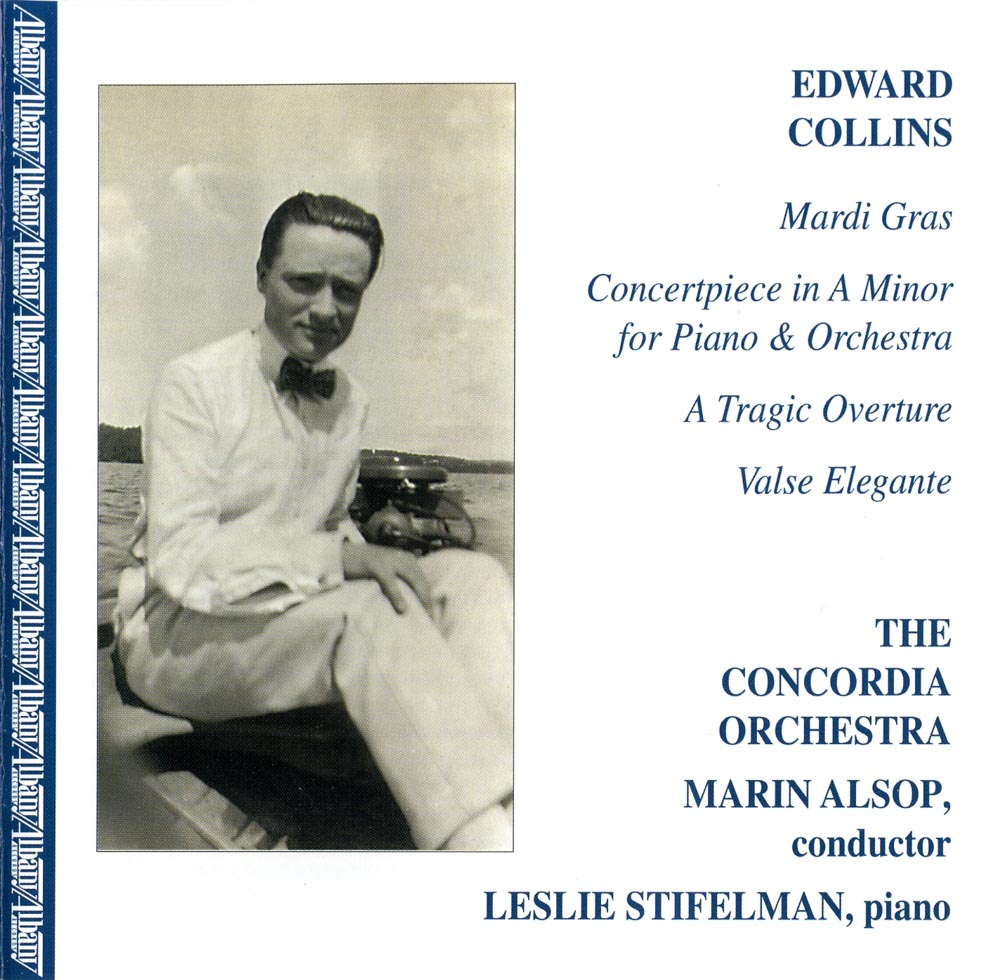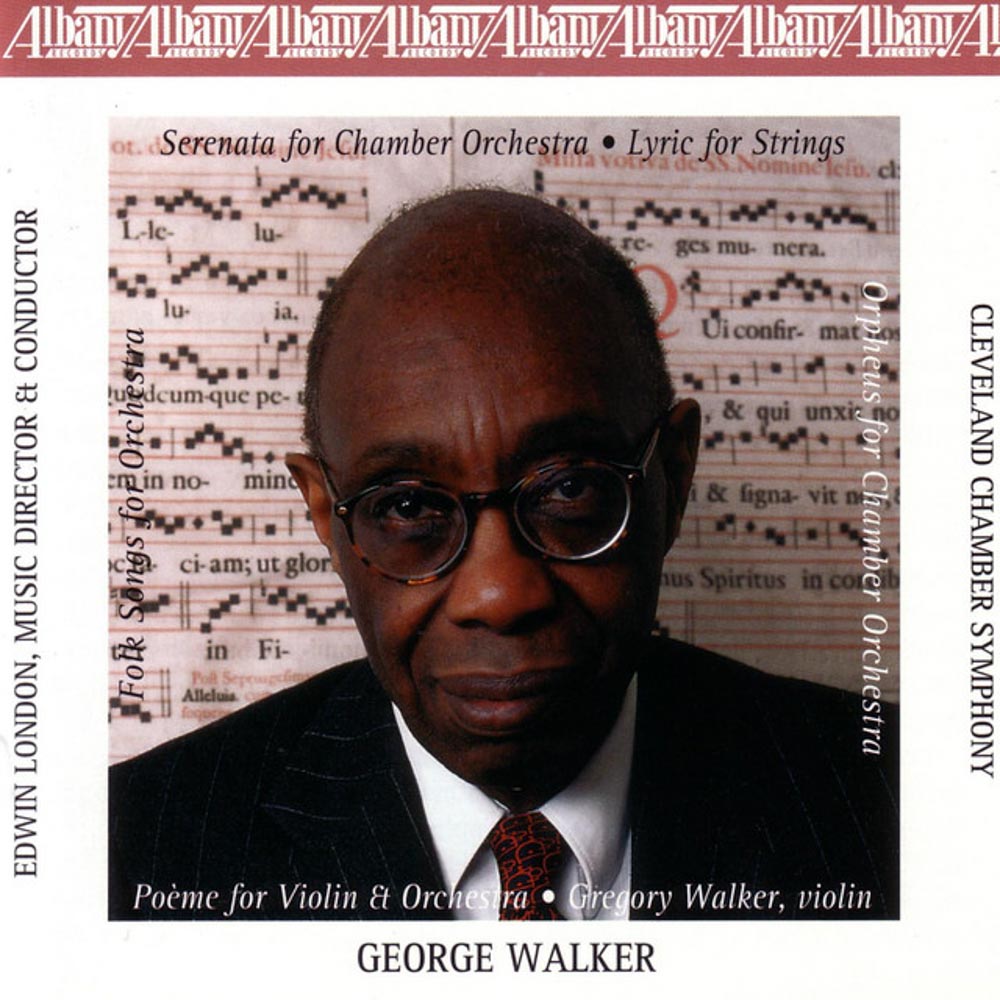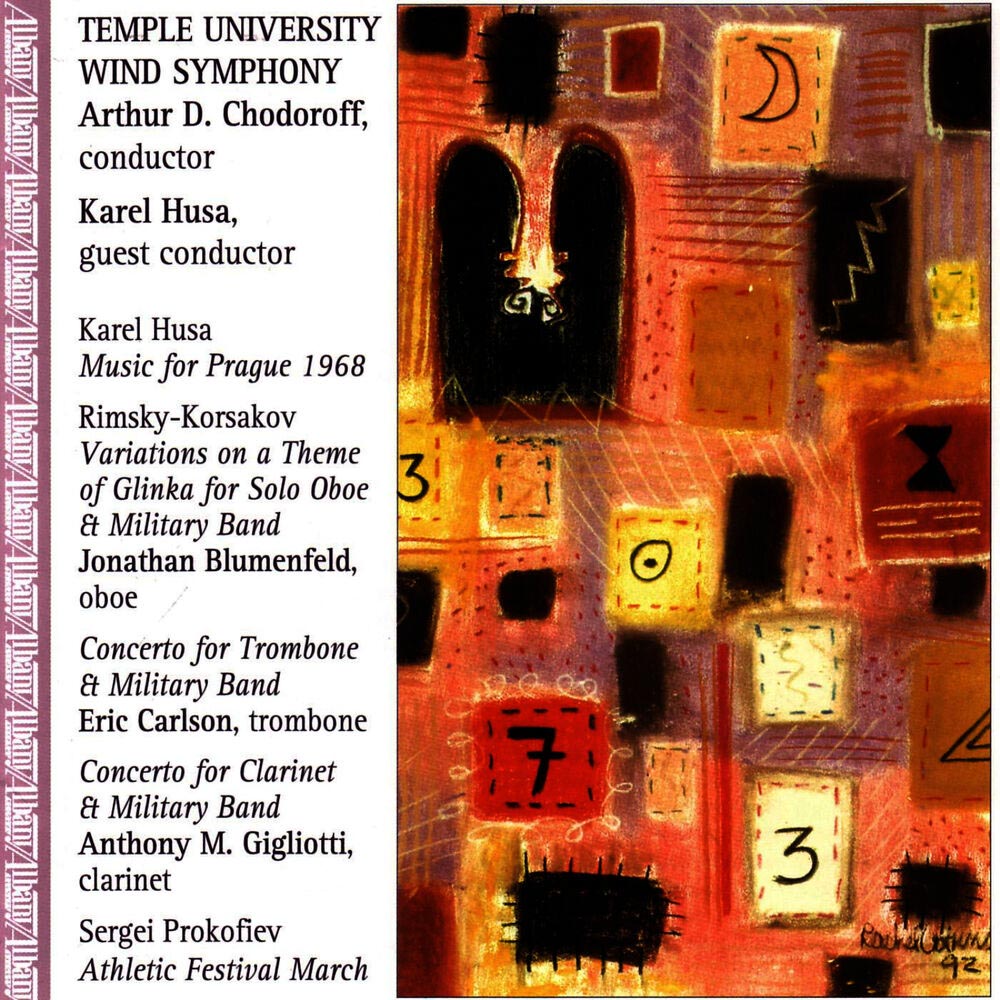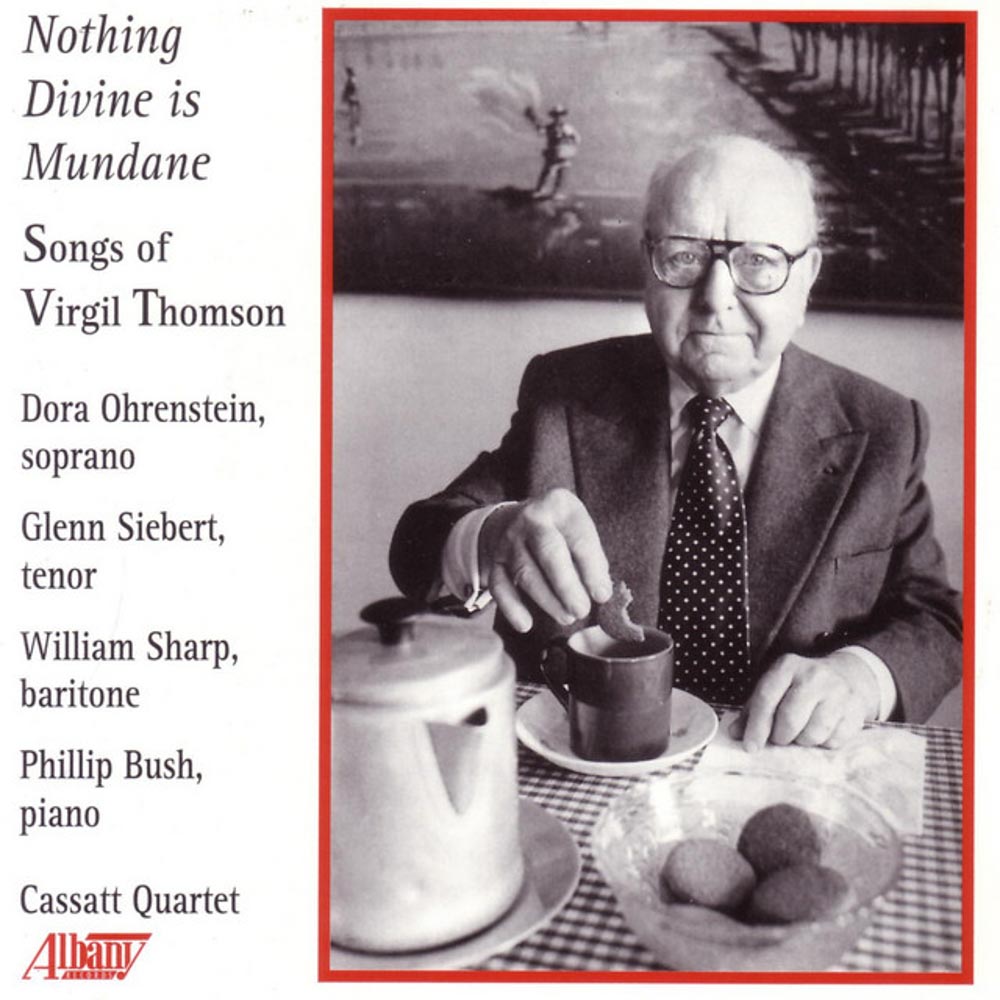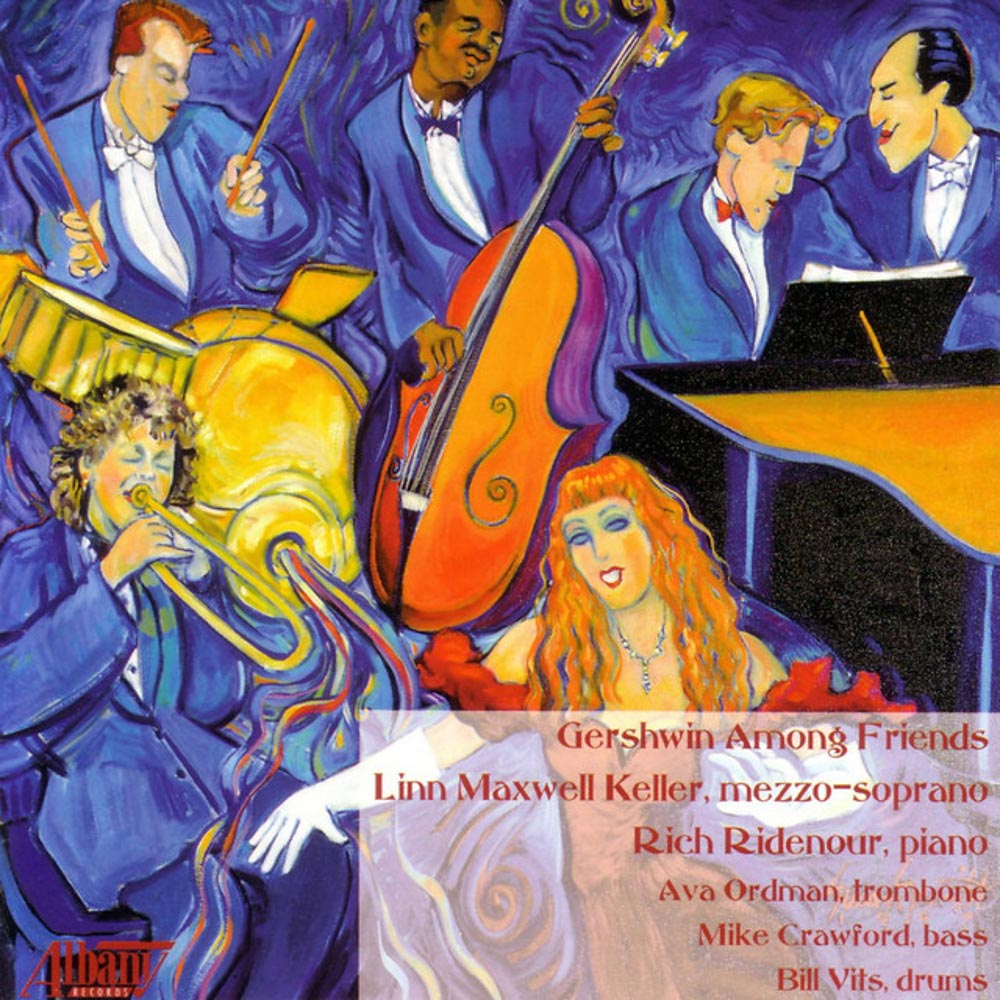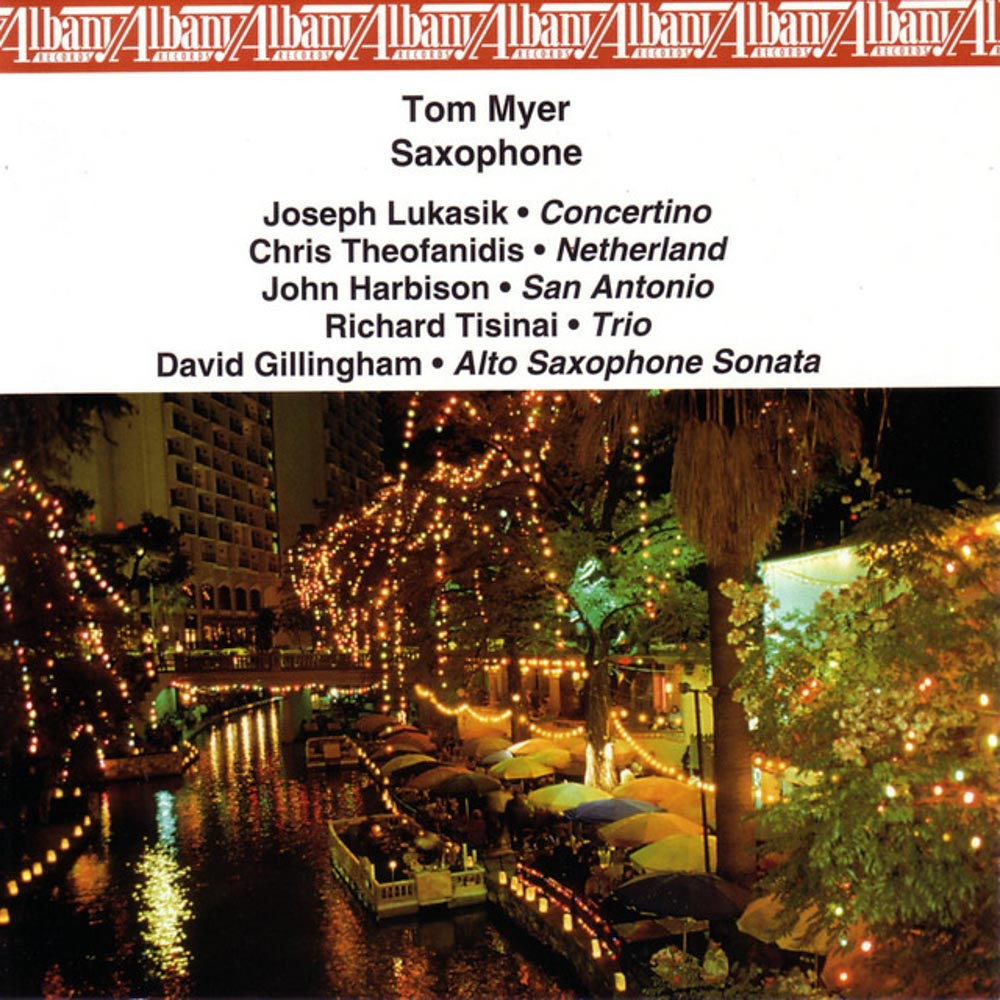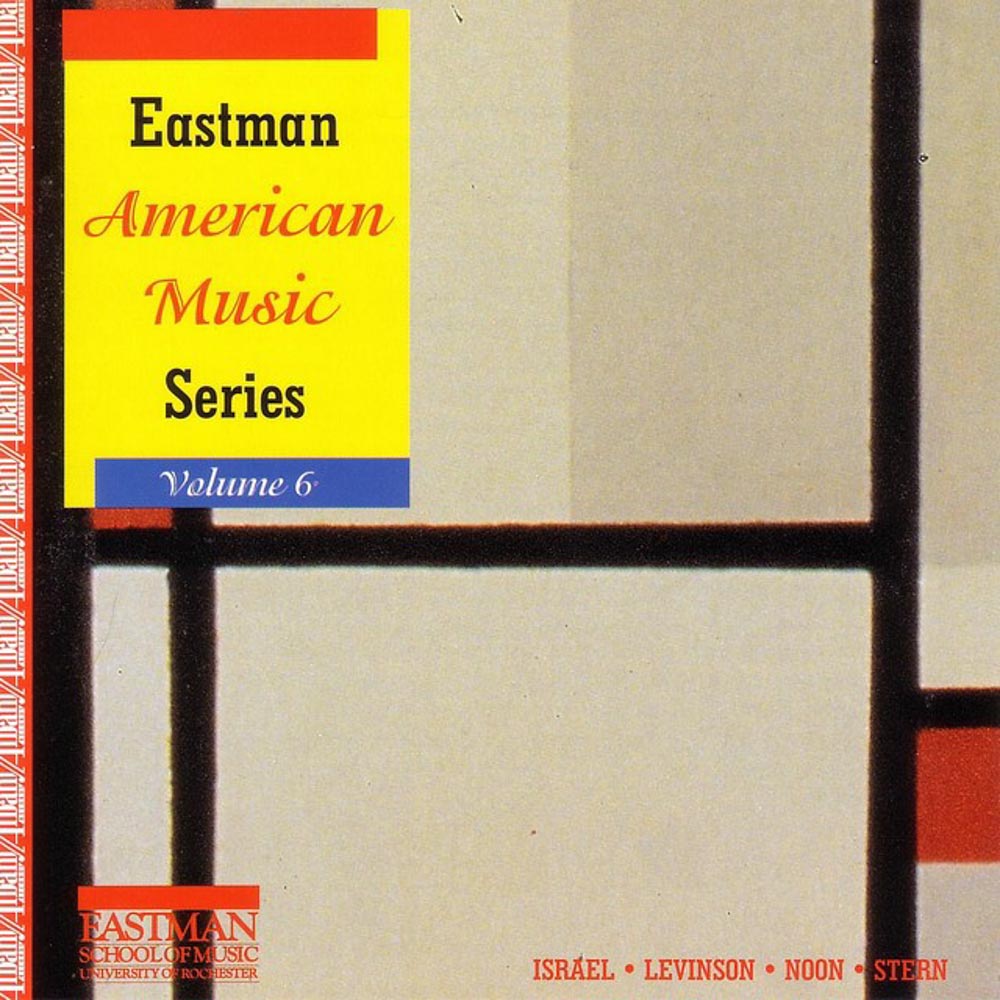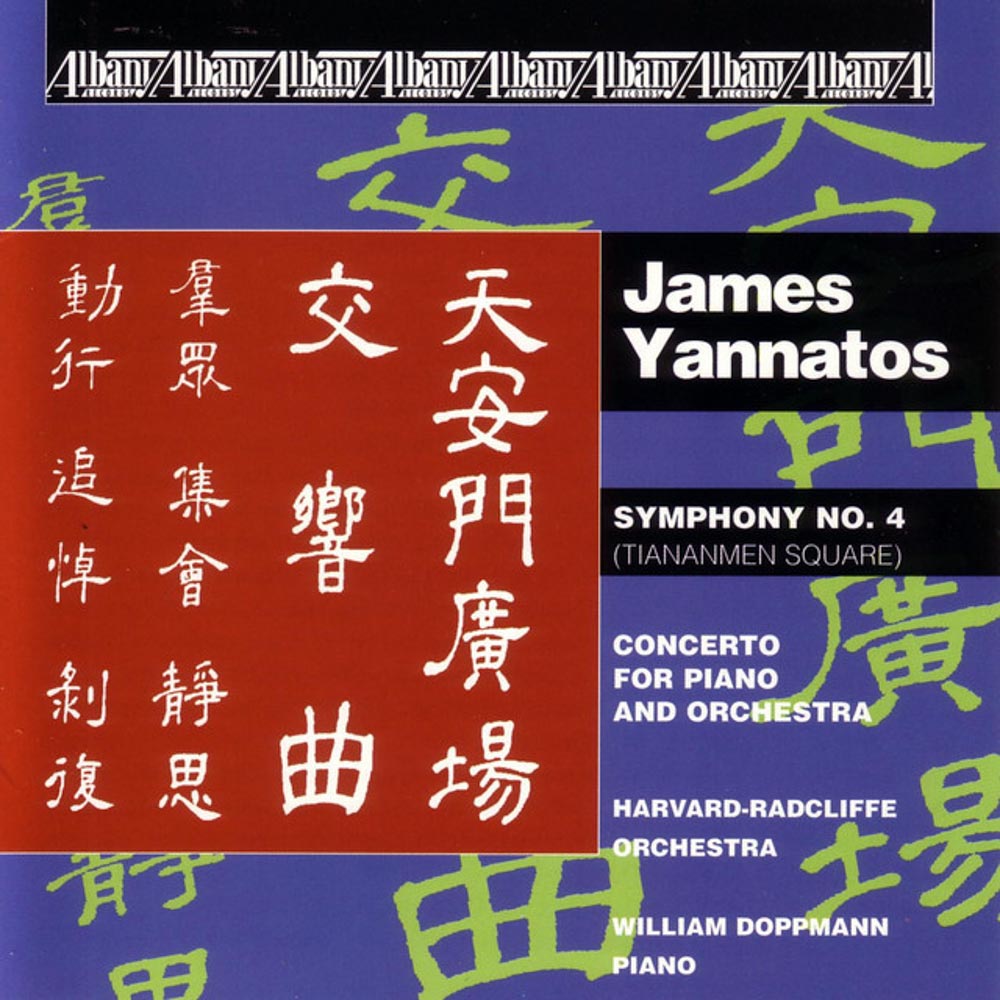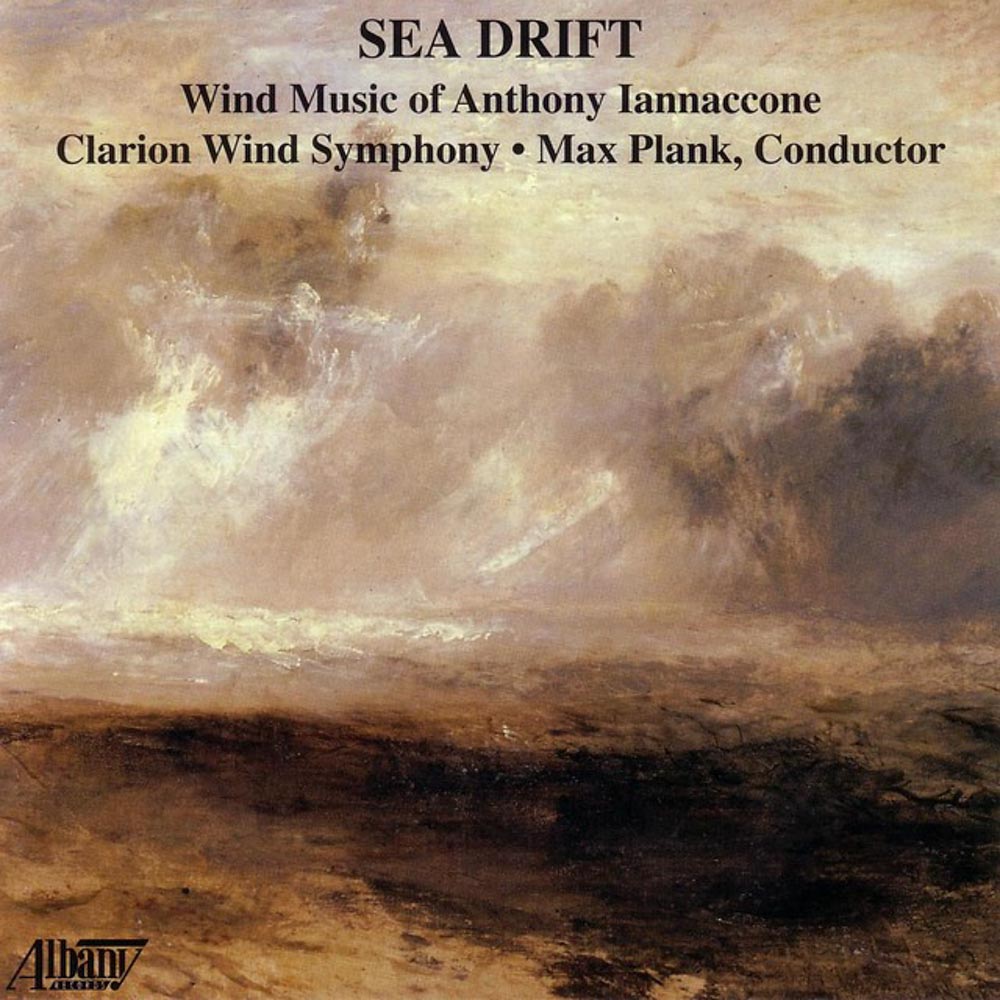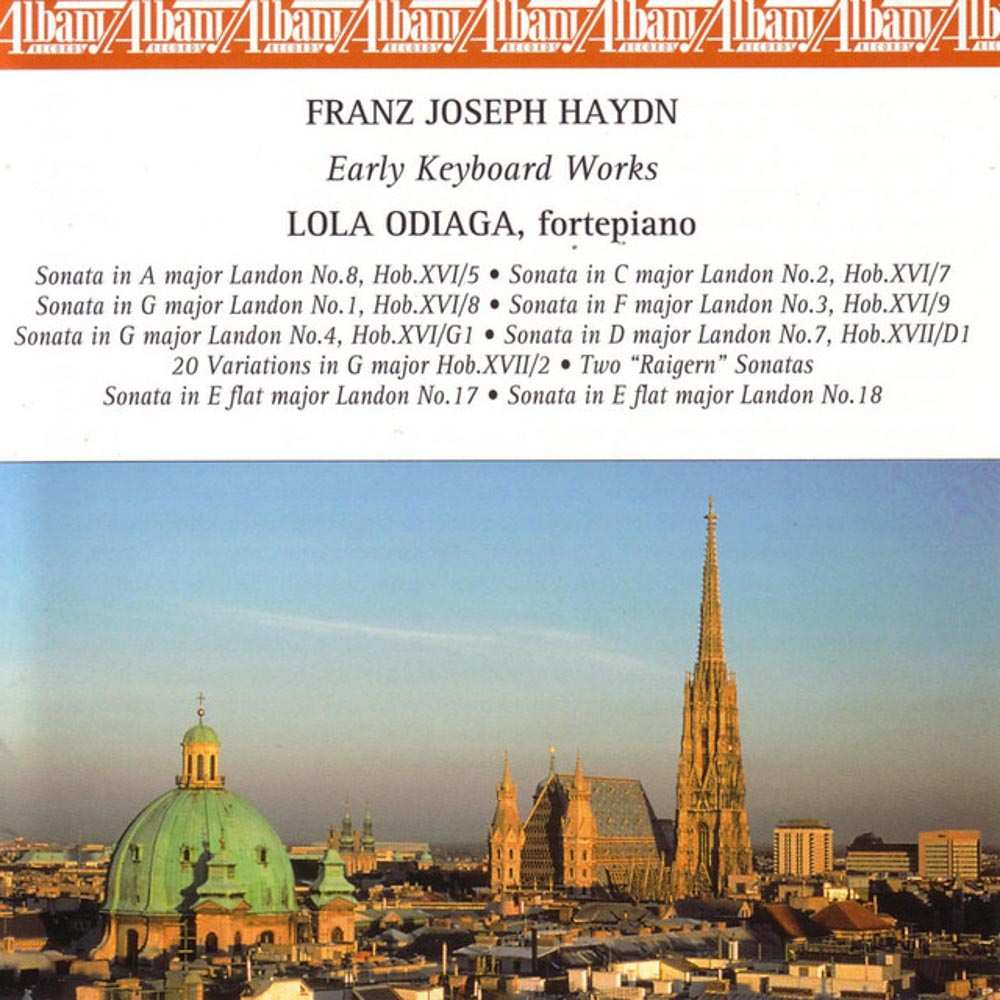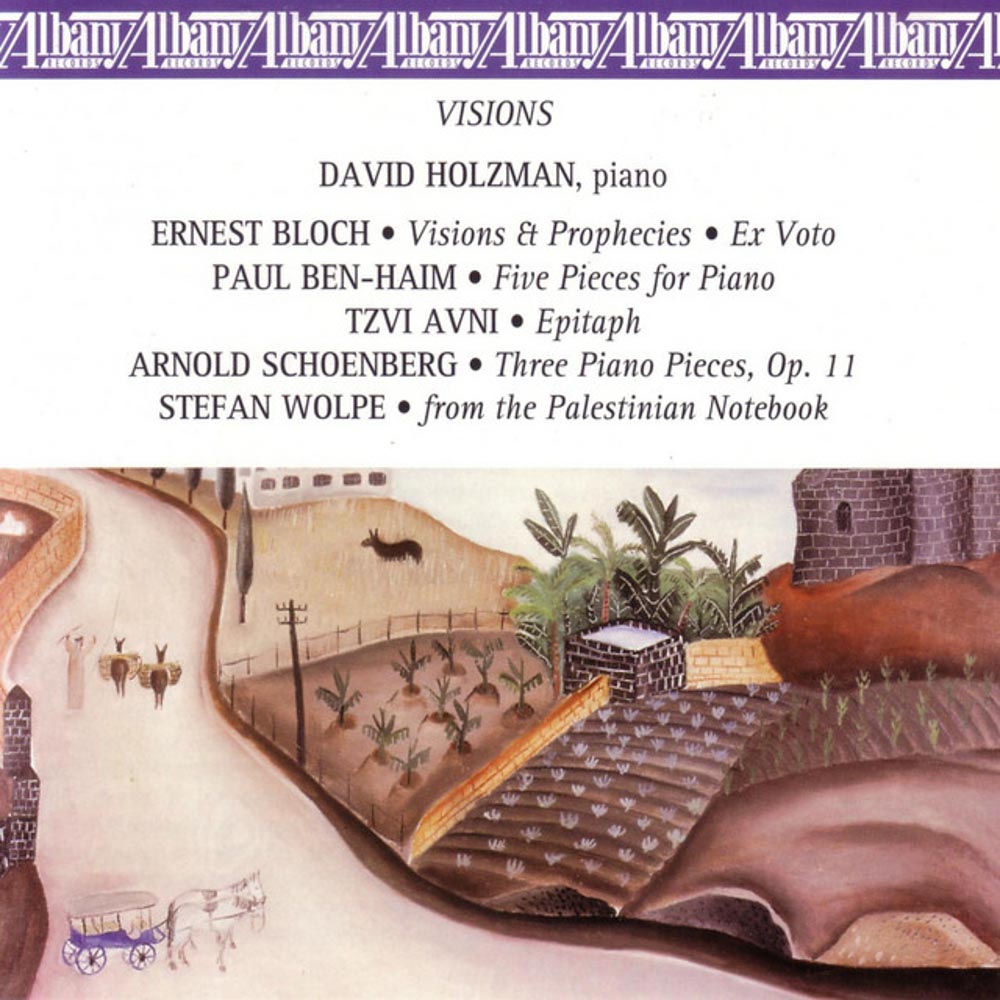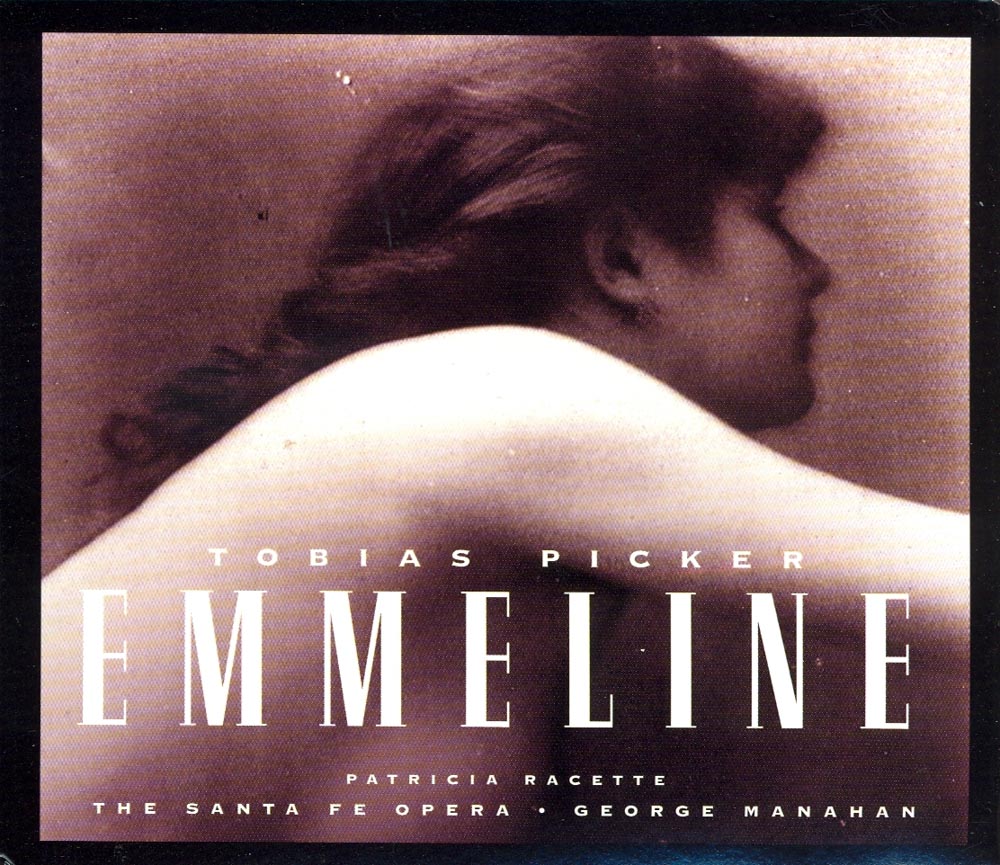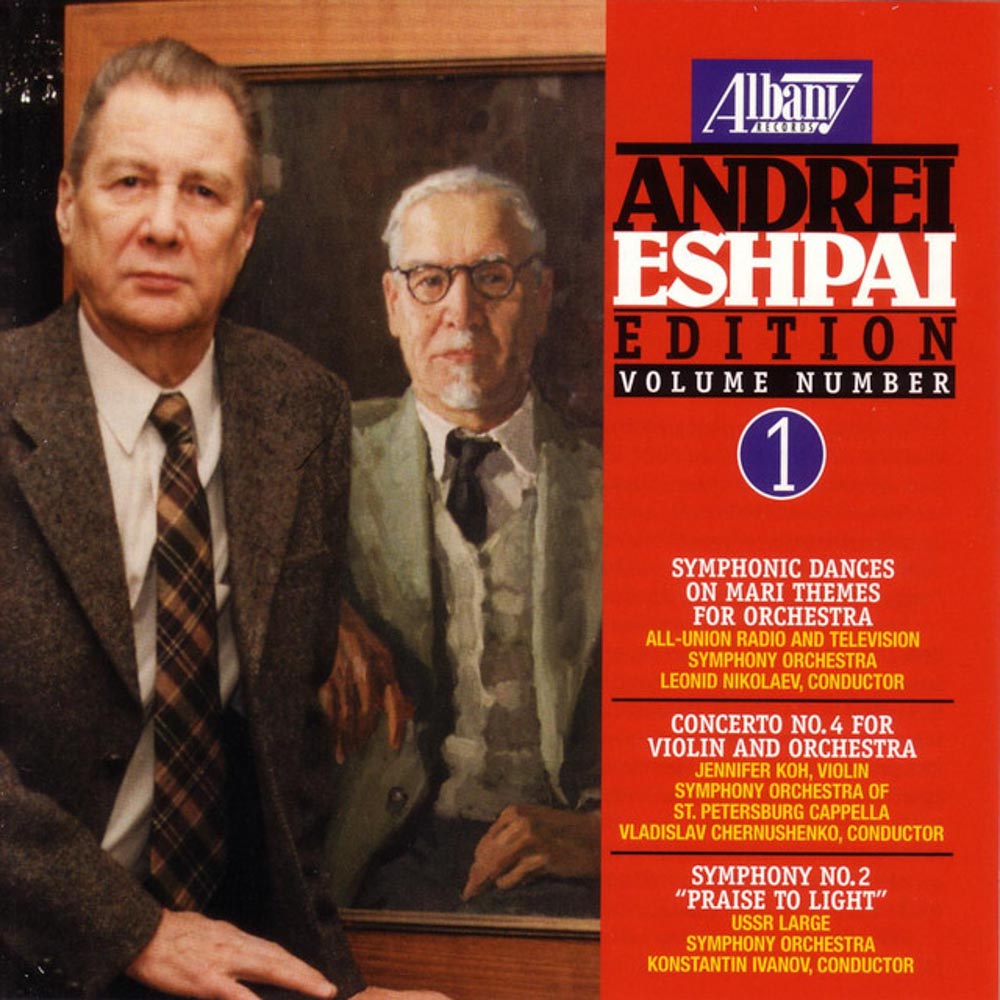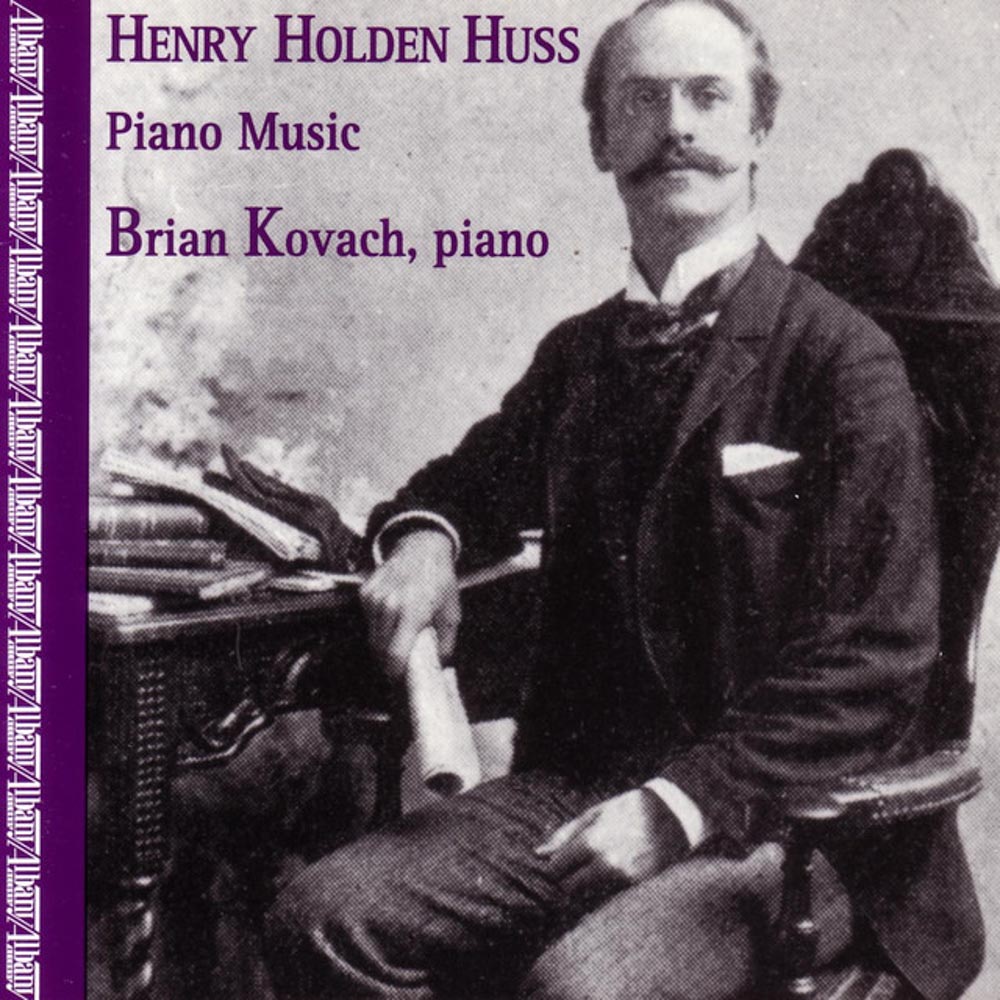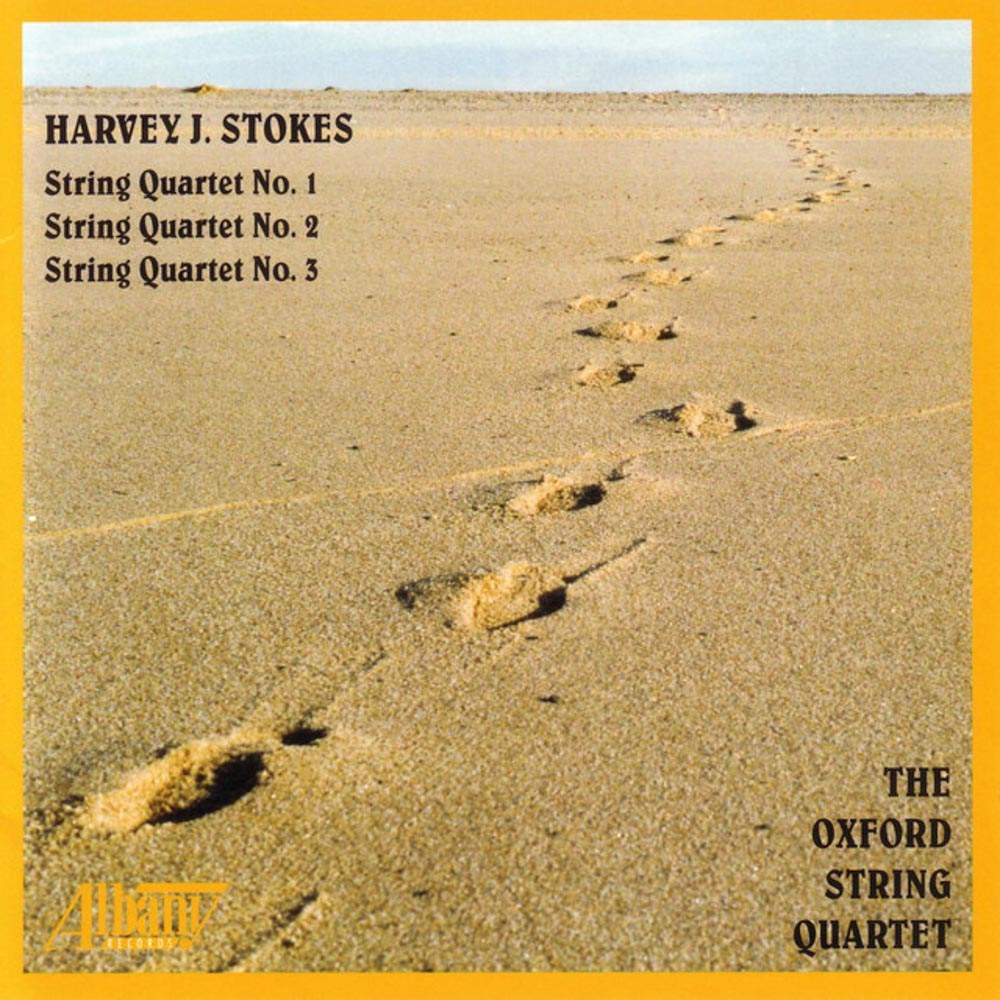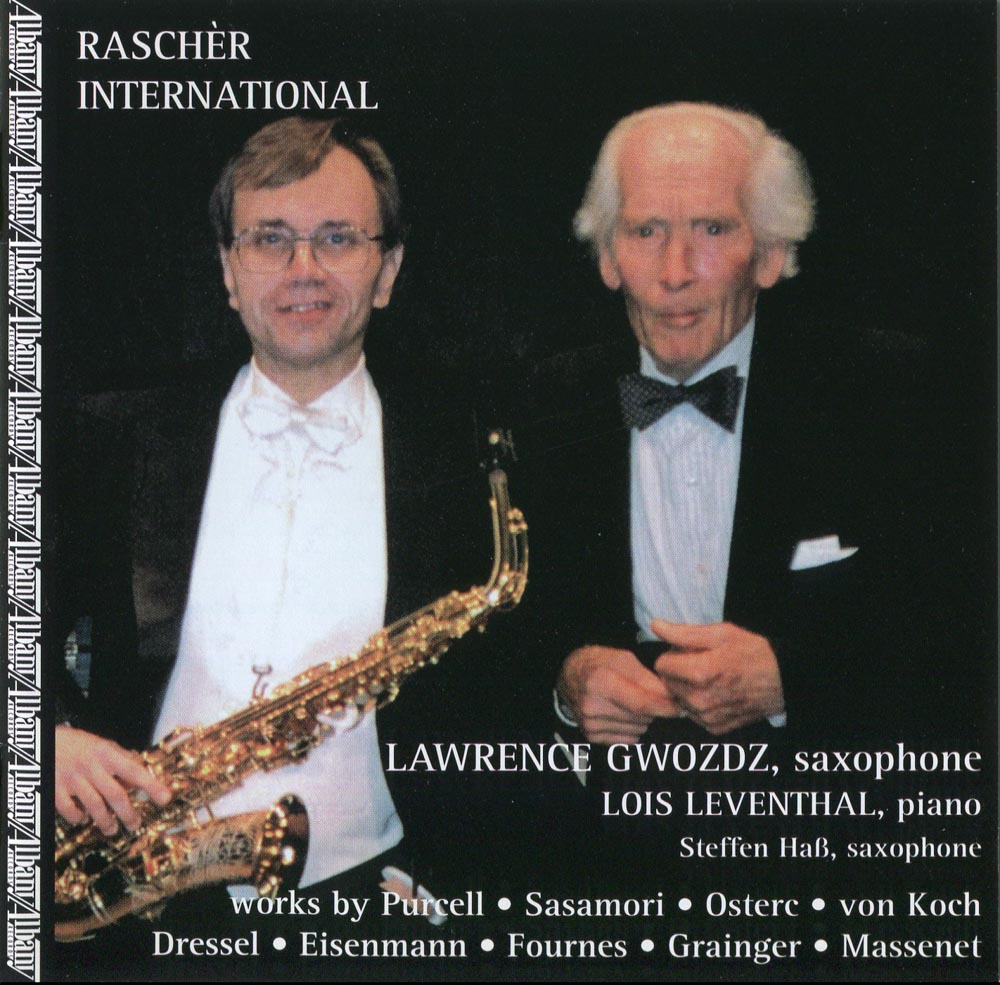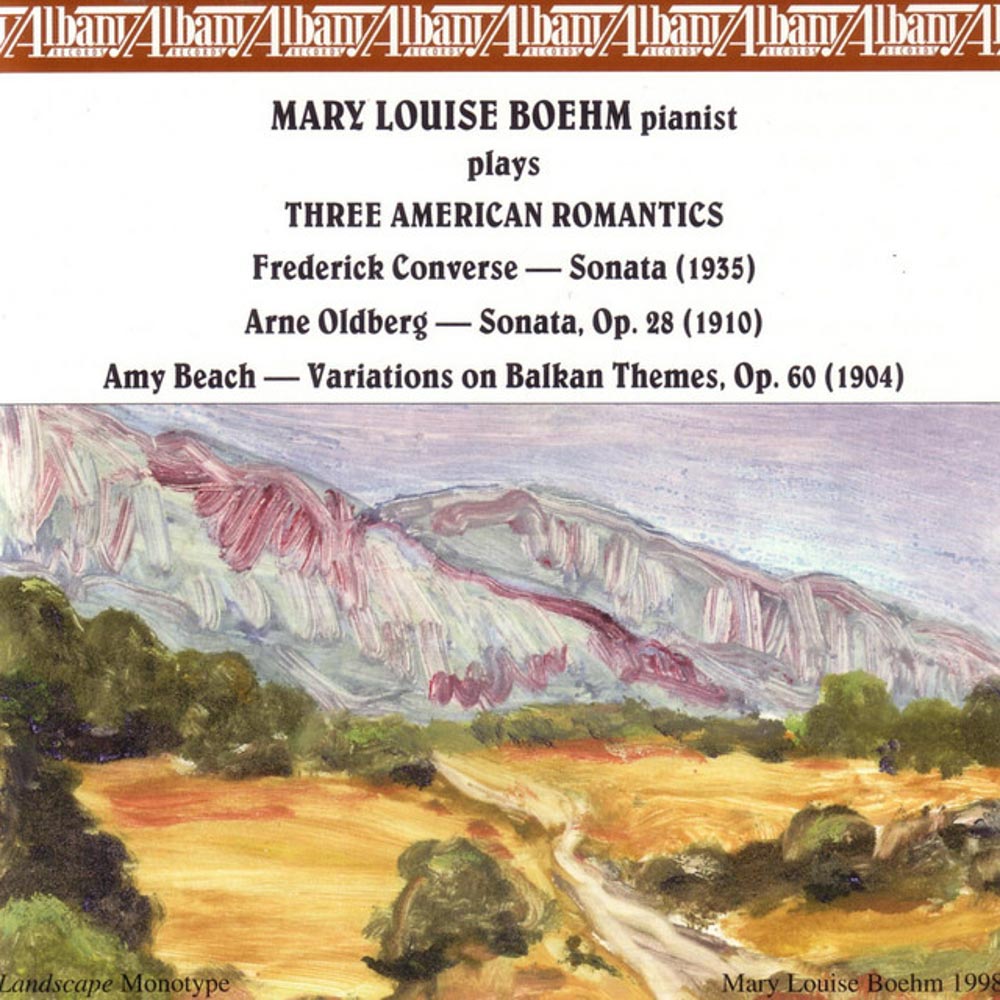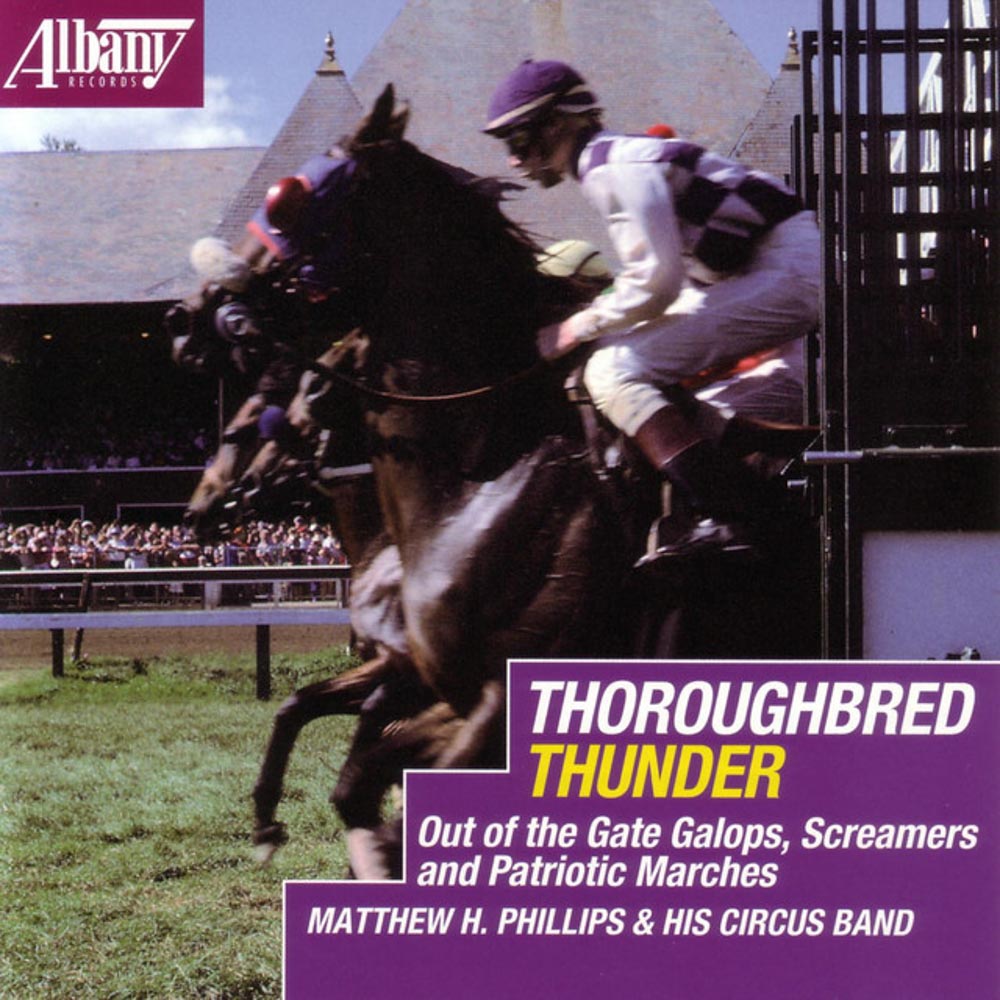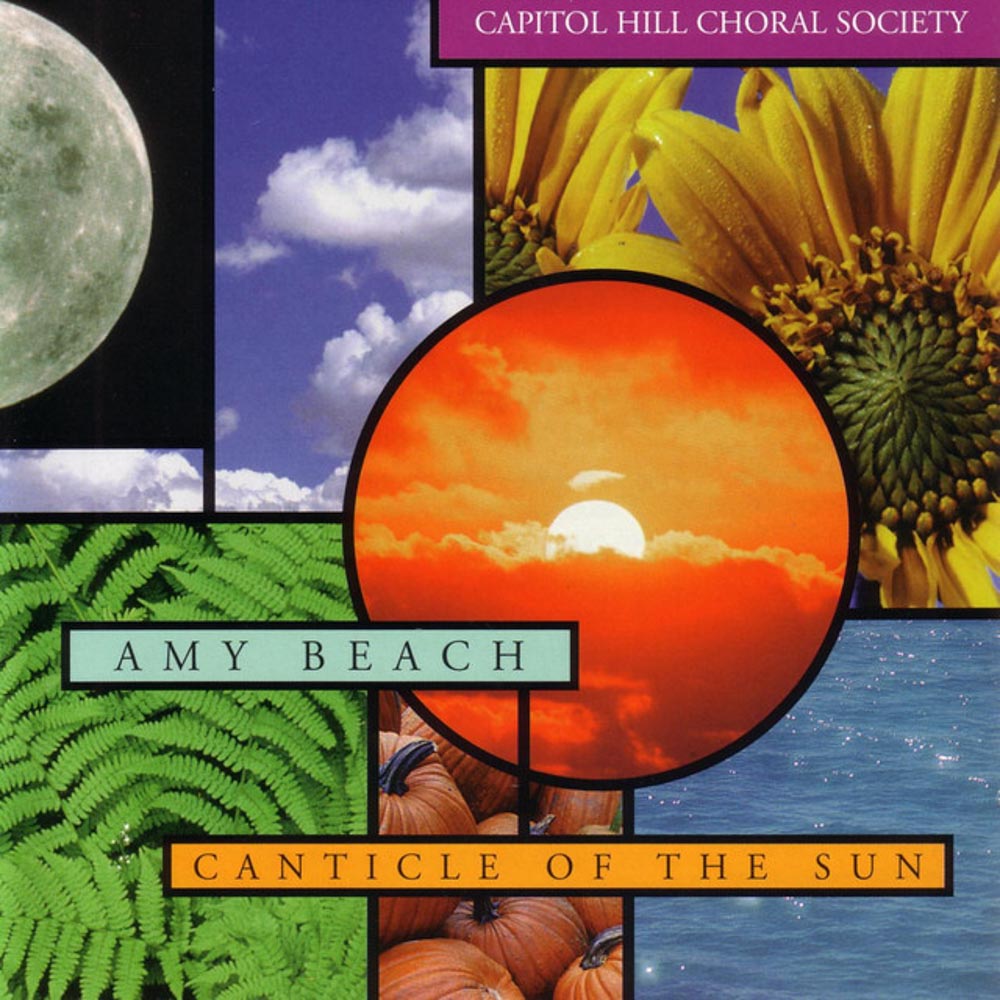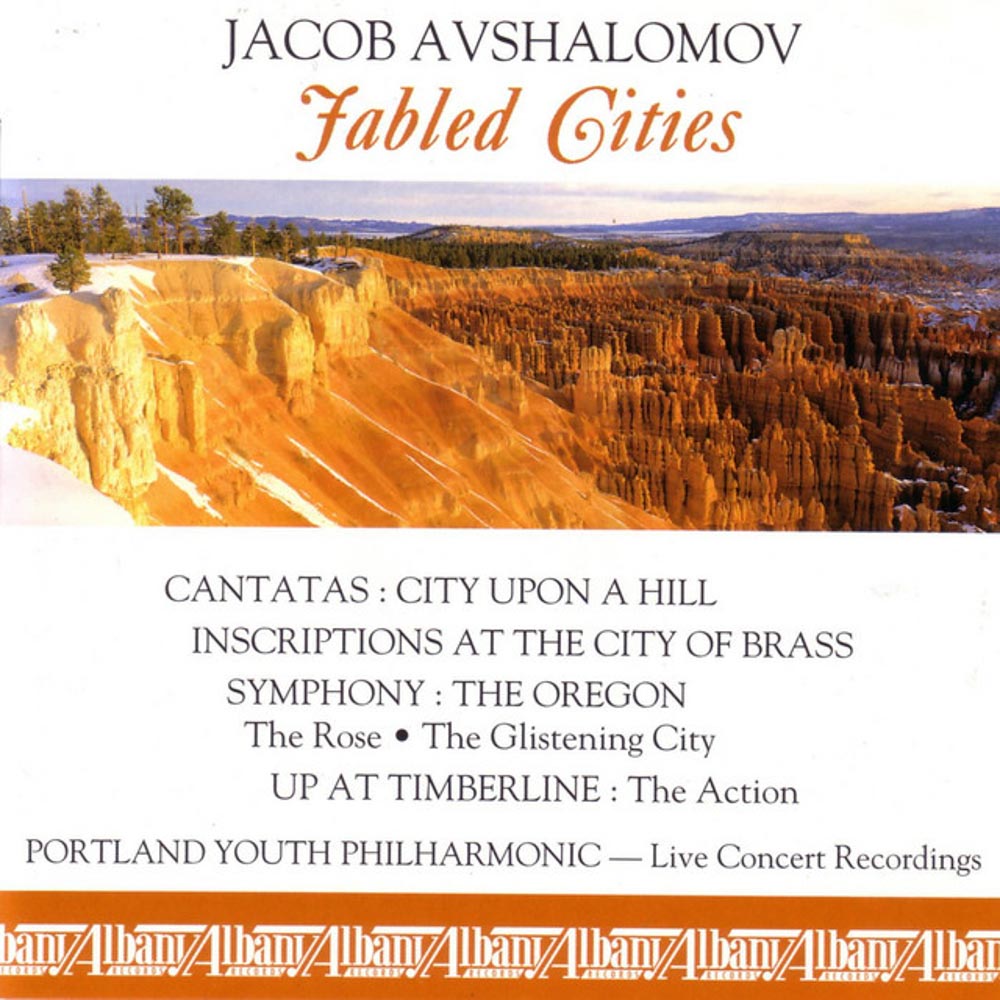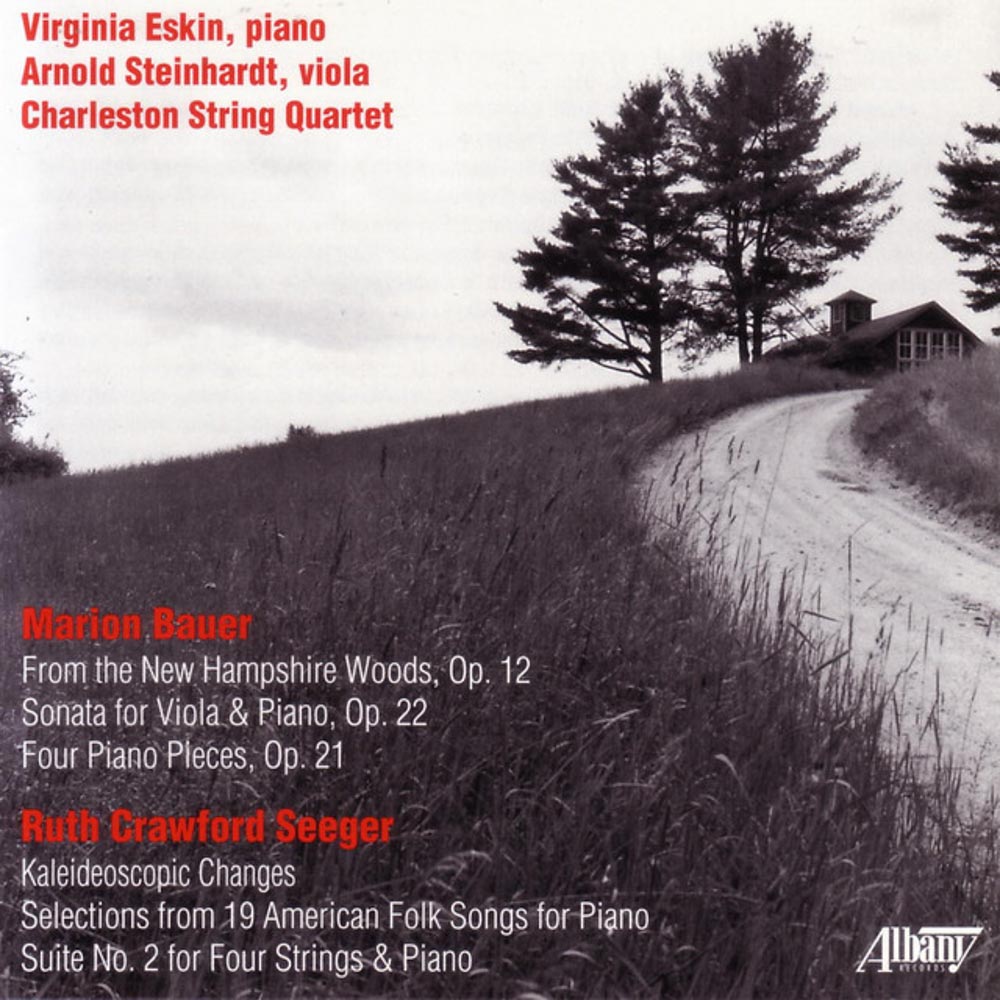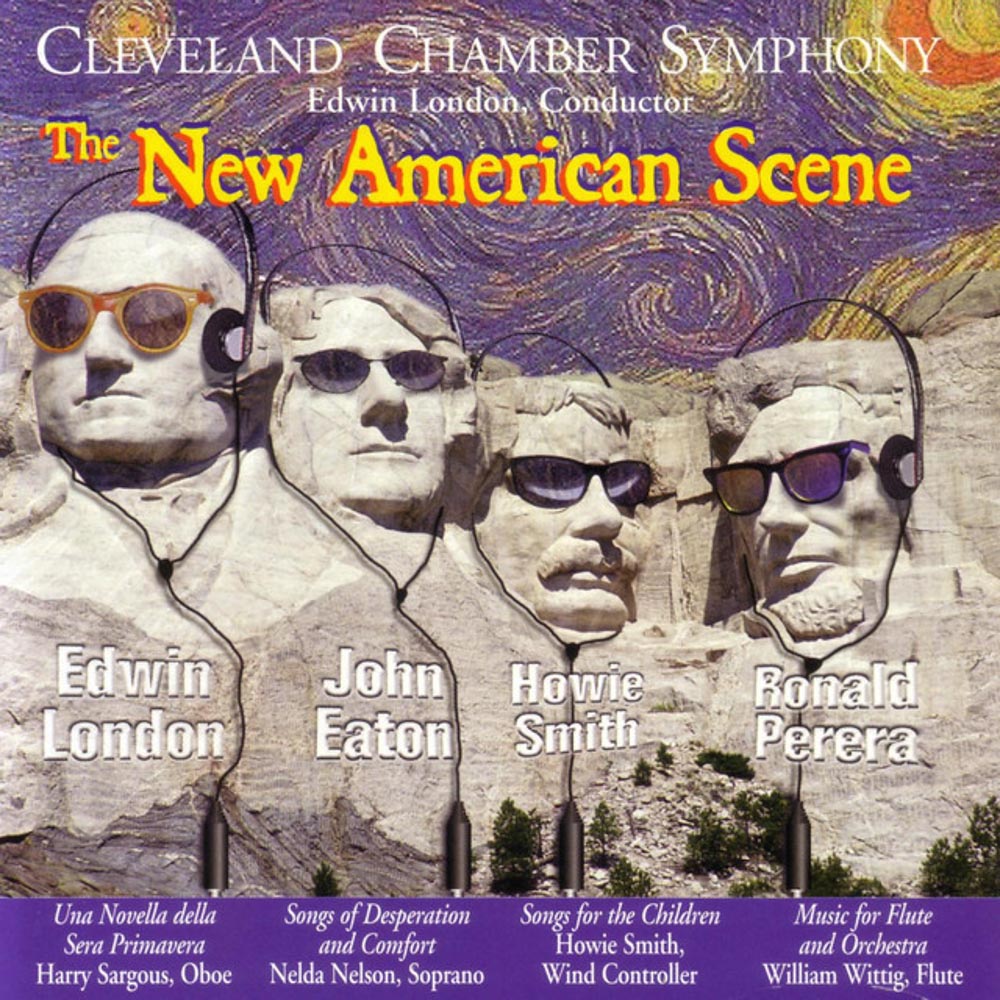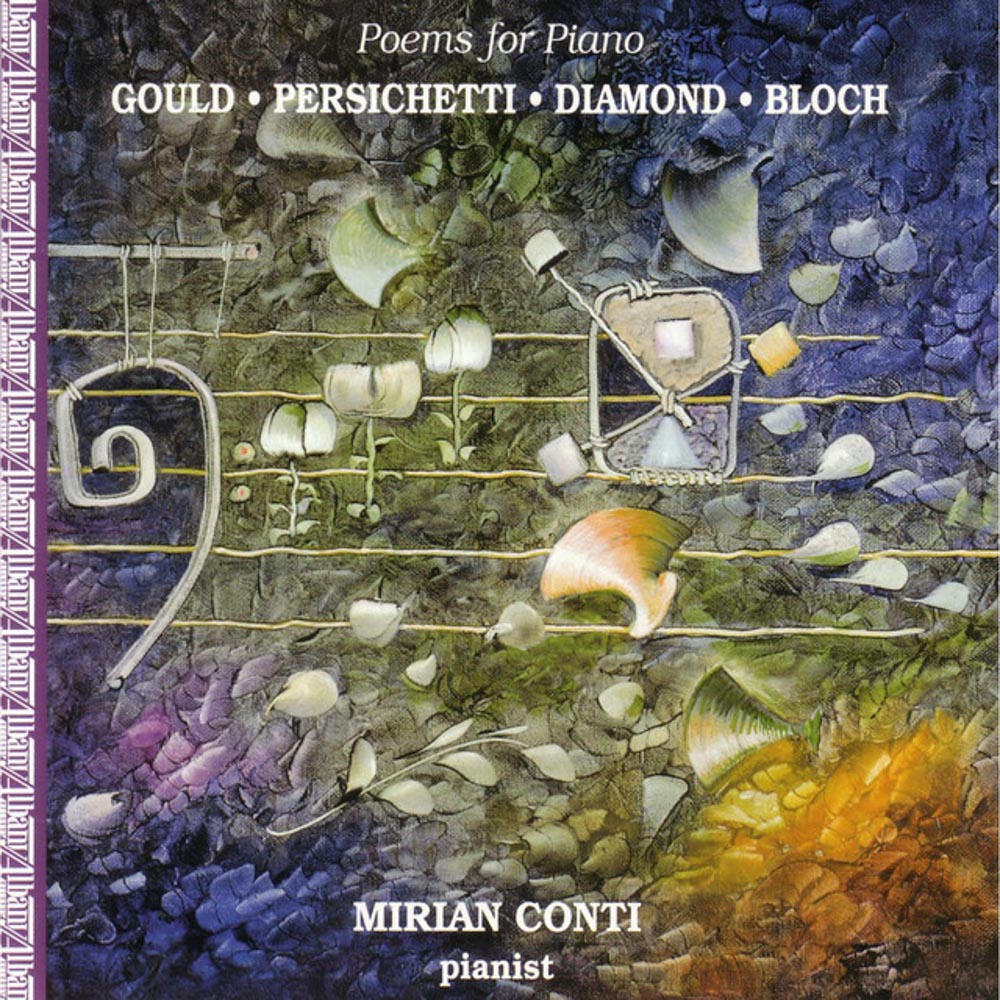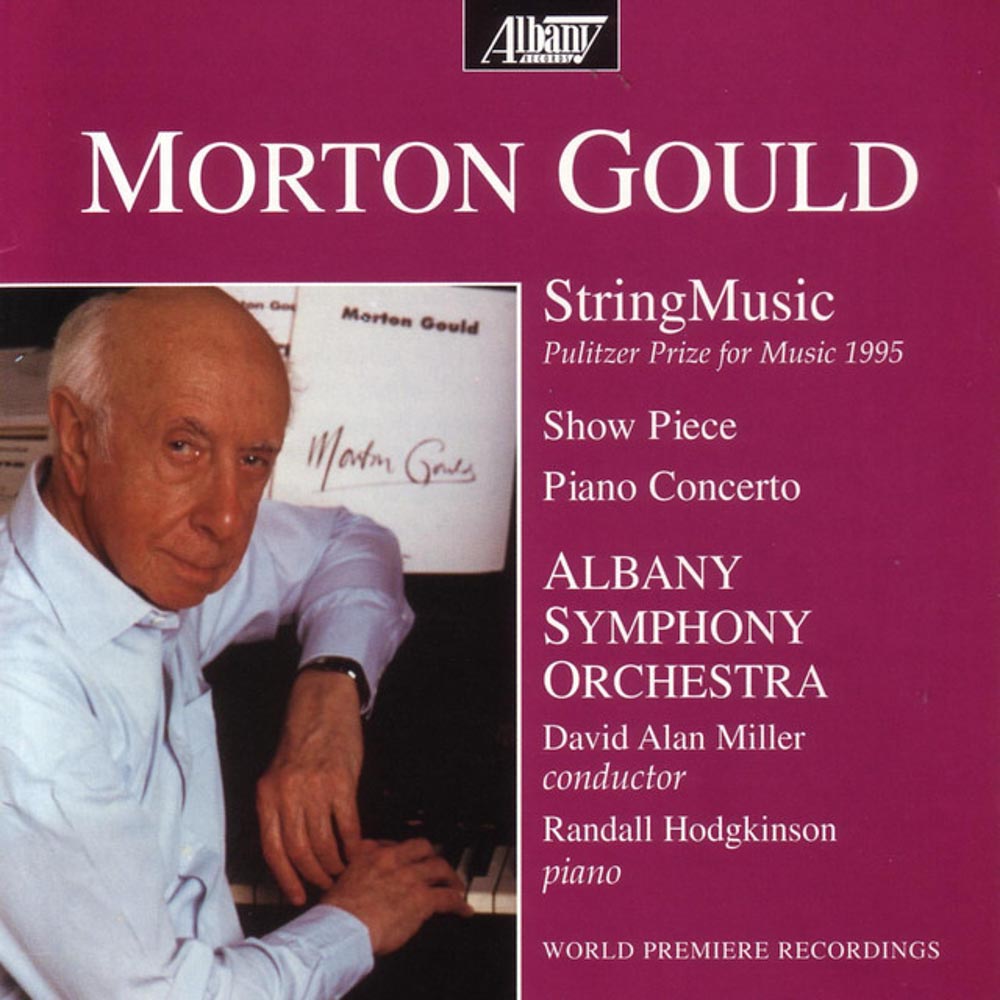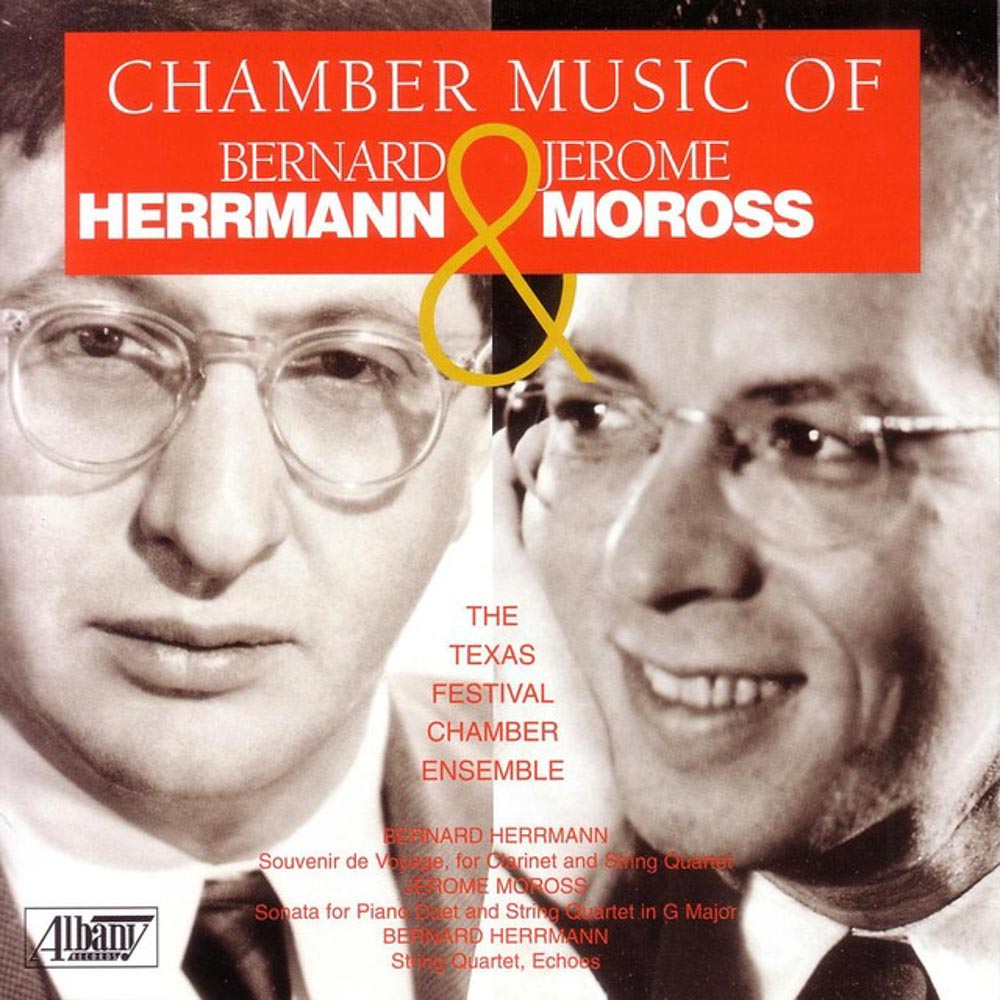Catalog #: TROY0266
Release Date: October 1, 1997InstrumentalThe significance of this four-volume recording project is its celebration of 20th century compositions for piano and some Chamber works written by Americans of African descent that have never been recorded or have had limited recorded performance. The contributions of the American composer of African descent to classical music is rarely addressed, and as a result, this music remains virtually unknown. Of the estimated 300 American composers of African descent listed in Readings in Black American Music: A Biographical Dictionary, few are known by most musicians, and little of their music is heard in concerts or on radio today. Furthermore, recordings of their classical music are difficult to locate because so very little of the music is available on compact disc. This compilation of works will be vital in addressing this problem. The works presented on this disc include a unique historical content and a variety of styles both quoted and extracted from the various traditional idioms of the composer’s heritage. The selected works presented in this first volume are representative of many 20th century styles and compositional ideas; the 12-tone serial techniques of Hale Smith, the multimetric and asymmetrical writings of Adolphus Hailstork, the Neo-Classic style of Roger Dickerson, the polymetric writings of Jeffrey Mumford, and the Cuban-African traditions of Tania Leon.
Catalog #: TROY0267
Release Date: November 1, 1997OrchestralIt is an honor for Albany Records to introduce you to the music of the disgracefully neglected American composer, Edward Collins. During the first part of the 20th century, when American music was struggling to find a distinctive voice and a place on concert programs, Chicago composers were blessed with a nurturing champion in the person of Frederick Stock, the second conductor of the Chicago Symphony Orchestra. Among the gifted musicians who would benefit from Stock's fatherly care was Edward Joseph Collins. Between 1924 and 1943 his music was often heard at Chicago Symphony concerts with the composer himself appearing as soloist in his piano concerti or as guest conductor of his various Orchestral compositions. He was born in Joliet, Illinois to Irish-American parents. The youngest of eight musically talented brothers and sisters, he was giving piano recitals at the age of nine and at 14 became a pupil of the renowned pianist Rudolph Ganz. When Ganz moved to Berlin, Collins accompanied him where he studied with Max Bruch and Engelbert Humperdinck. He made his European debut in 1912 and in the fall returned to America, touring on a double bill with the great soprano Ernestine Schumann-Heink (Collins's sister, Kate Hoffman, was Schumann-Heink's accompanist for 35 years). As a result of the tour, Collins was engaged as the assistant conductor of the Century Opera Company in New York. In 1914, he became an assistant conductor at the Bayreuth Festival in Germany. During World War I, Collins served as a Lieutenant for the 88th Division in France. He entertained troops not only by performing but also by composing an operetta "Who Can Tell?" which General Pershing and President Wilson attended on opening night. After the Armistice, he returned to the concert stage. In 1919 he joined the faculty of the Chicago Musical College. In 1933 he moved his studio to the American Conservatory of Music and remained on their faculty until his untimely death in 1951. It is wonderful that we have musicians of the caliber of Marin Alsop and her great Orchestra giving Edward Collins's music the attention it deserves. Here is the music of a wonderful composer.
Catalog #: TROY0270
Release Date: January 1, 1998OrchestralThe Pulitzer Prize winning composer, George Walker, composed his Serenata for Chamber Orchestra for the Michigan Chamber Orchestra. It received its premiere in Detroit in October 1983. It received another performance by the New York Philharmonic in July 1984 on a Horizon's 94 concert. The Lyric for Strings was composed in 1946 and premiered that year by the student Orchestra of the Curtis Institute of Music conducted by Seymour Lipkin in a radio concert. It received another performance the following year by Richard Bales and the National Gallery Orchestra. The Poeme for Violin and Orchestra was premiered by the St. Paul Chamber Orchestra with Cho-Liang Lin as violin soloist in 1991. It is a revised version of an earlier Violin Concerto. Orpheus for Chamber Orchestra was commissioned by the Cleveland Chamber Orchestra and was completed in 1994. It received its premiere in March 1995. Besides the Chamber Orchestra, it includes a part for narrator and singer. The Folk Songs for Orchestra were completed in the fall of 1990 and was premiered in May 1992 by the Baltimore Symphony under David Zinman. The composer describes his intention as "to set these melodies in an interesting way, in a respectful Orchestral manner. They are wonderful melodies. Four spirituals are quoted intact."
Catalog #: TROY0271
Release Date: December 1, 1997Wind EnsembleRimsky-Korsakov's three works for solo instruments and military band, the Concerto for Trombone (1877), the Variations for Oboe (1878) and the Concertstuck for Clarinet (1878), date from his years as Inspector of the Imperial Russian Naval Bands (1873-1884). Not only do these works testify to the growing expertise in Imperial Russian military music performance (doubtless as a result of the newly established St. Petersburg and Moscow Conservatories), but they also give us some insight into Rimsky's ever-evolving compositional thinking. The composer acknowledged as much, writing in his memoirs that they were "written primarily to provide the military band concerts with solo pieces of a less hackneyed natures than the usual: secondly that I myself might master the virtuoso style so unfamiliar to me, with its solo and tutti, its cadences, etc." And in many ways these three pieces constitute "experiments" in that combination of ensemble sonority and solo virtuosity that earmark Scheherazade (188) as a masterpiece of Orchestral wizardry. The first performance of Karel Husa's Music for Prague 1968 was given at the Music Educators National Conference in Washington, DC in 1969. The work was commissioned and premiered by the Ithaca College Concert Band with Kenneth Snapp, conductor. Since that time, it has received over 7,000 performances in both its original version for concert band, and the composer's adaptation for symphony Orchestra. Prokofiev began composing marches for wind band in the mid 1930s, during the period when he returned to the Soviet Union. His first was the Athletic Festival March from 1935, in which he imagined a festival march for millions of young Soviet athletic. As well, the three soloists on this disc are all or have been members of the Philadelphia Orchestra.
Catalog #: TROY0272
Release Date: December 1, 1997VocalDora Ohrenstein in her notes for this disc writes: "At its best Thomson's music achieves an eloquence all the more moving because it is done with such seemingly simple means. And in no genre is this more true than in his vocal music, where his outstanding literary skills came into play. Thomson was a gifted writer of prose, and he had an unerring ear and feel for language. When these talents were put to use in the setting of a text the results are exemplary - indeed, his achievements here are seldom disputed. That recognition has focused primarily on his fidelity to the natural rhythms and cadences of speech and for Thomson this was an enduring concern. Writing about his first song settings of poems by Gertrude Stein, he says: "My hope in putting Gertrude Stein to music had been to break, crack open, and solve for all time anything still waiting to be solved, which was almost everything, about English musical declamation. My theory was that if a text is set correctly for the sound of it, the meaning will take care of itself...I had no sooner put to music...one short Stein text than I knew I had opened a door. I had never had any doubts about Stein's poetry; from then on I had none about my ability to handle it in music. His text settings are models of clarity, but closer examination reveals that there is far more to admire in Thomson's handling of poetry. Time and time again, he finds ingenious ways to reveal a poem's structure, enhance and amplify its meaning, and underline the potent word or image." Here we have a wonderful selection of songs by this fine American composer who composed so well for the voice.
Catalog #: TROY0273
Release Date: July 1, 1998ChamberThe real draw for this disc is the presence of the great trumpet player, Adolf Herseth from the Chicago Symphony Orchestra. For indeed, he is one of a kind, a true master recognized for his brilliant musicianship by his colleagues and audiences the world over. "Quite possibly the most dazzling player on his instrument in the world today," says Donal Henahan in The New York Times. Mr. Herseth was appointed Principal Trumpet of the Chicago Symphony in 1948 immediately after graduating from the New England Conservatory. A native of Minnesota, he also holds a degree from Luther College in Decorah, Iowa. During World War II he served as a bandsman at Iowa prefight school and ended his military service with the Commander of the Philippine Sea Frontier in the South Pacific. His years with the CSO have included numerous solo appearances and concerts with many of the world's finest conductors, not to mention work on some of the finest recorded performances in the repertoire. The Asbury Brass Quintet is based in Chicago. Mr. Herseth, who joins them in the performance of the Bohme Sextet, has touched the lives of each one of the members of the Quintet's players, either as a teacher, colleague or mentor.
Catalog #: TROY0274
Release Date: January 1, 1998VocalEvery label that specializes in American music, at one time or other, does an album devoted to the music of George Gershwin; trying to come up with a disc that is unusual and interesting is the challenge. As the title suggests, all the musicians on this album are friends; the instrumentalists are all members of the Grand Rapids Symphony Orchestra. Just as George Gershwin was himself a product of diverse cultural influences, so his songs represent a variety of musical forms, styles and mediums. The collection on this disc spans the entire creative period of Gershwin's life, from The Real American Folk Song (written in 1918, and his first collaboration with his brother Ira) to the songs for the 1938 movie "The Goldwyn Follies," Love Walked In, I Love To Rhyme, and Our Love is Here to Stay, which were released after the composer's sudden death. Gershwin's friendships and alliances are evident in the songs as well. There are eight songs written for Fred Astaire and-or Ginger Rogers, two songs from the Broadway musical "Girl Crazy," (notable for the fact that the show was the Broadway debut of Ethel Merman and featured a pit Orchestra that included the likes of Glenn Miller, Jimmy Dorsey and Benny Goodman), and further selections which feature Linn Maxwell Keller with the musicians as well as the musicians alone.
Catalog #: TROY0275
Release Date: April 1, 1998ChamberTom Myer is the Professor of Saxophone for the College of Music at the University of Colorado at Boulder and has served as the Director of Jazz Studies from 1988-95. He received his M.M. degree in woodwind performance and jazz studies from North Texas State University. He earned his undergraduate degree in music education from the University of Wisconsin-LaCrosse. He has worked professionally for Woody Herman, Nelson Riddle, Ice Capades and Disney World, and has backed up such names as Dave Grusin, Doc Severinson, Bob Hope, Dionne Warwick and numerous others. Joseph Lukasik is on the music theory and jazz faculties at the University of Colorado at Boulder. In 1993, he received first prize in the Barlow International Composition Competition. Chris Theofanidis' Netherland was commissioned by Worldwide Concurrent Premieres and Commissioning Fund, as a consortium commission. There are two versions of the work, one for piano and one for Orchestra. David Gillingham is Professor of Music Composition at Central Michigan University in Mt. Pleasant, Michigan.
Catalog #: TROY0277
Release Date: February 1, 1999VocalBrian Israel studied with Ulysses Kay, Robert Palmer, Burrill Phillips and Karel Husa. He graduated from Cornell in 1975. He taught at Syracuse University for 12 years until his untimely death at 35. His In Praise of Practically Nothing for tenor voice and eight-player Chamber ensemble was composed in Syracuse and is a setting of poems by Samuel Hoffenstein. Gerald Levinson is professor of music and former chair of the Department of Music and Dance at Swarthmore College. He studied composition with George Crumb, Richard Wernick and George Rochberg. His work in dark is a setting of poems by Nanine Valen and Robert Lax. David Noon is a graduate of Yale. His teachers have included Milhaud, Charles Jones, Yehudi Wyner and Mario Davidovsky. His Six Chansons were composed when he was a Fulbright Fellow in Warsaw, Poland. They are settings of six poems by the great Chinese master of the late Tang dynasty, Meng Chiao. Noon translated the poems into French. Robert Stern was educated at Eastman. He studied with Louis Mennini, Kent Kennan, Wayne Barlow, Lukas Foss and Howard Hanson. He writes: "Blood and Milk Songs takes its name from Blood and Milk Poems, a volume by Ruth Whitman. The lyric quality of the poetry is mirrored in the music, which is propelled by a strong melodic impulse."
Catalog #: TROY0278
Release Date: March 1, 1998OrchestralIn the January-February 1998 issue of Fanfare, John Story writing about Yannatos' Trinity Mass said: "Trinity Mass is possibly a masterpiece worthy to stand comparison with such other 20th-century milestones as Britten's War Requiem, Tippet's A Child of Our Time and The Mask of Time, Penderecki's St. Luke's Passion, or Nono's Prometeo. The two works on this disc are the equal to the Trinity Mass, if not easier to enjoy because they are Orchestral works and the performances by both the Orchestra and the pianist are first-rate. The performers, under the composer's direction, play as well as any in this unfamiliar music. In 1988, William Doppmann asked Yannatos to write a piano concerto for him. He asked that it be a substantial piece which would show off the piano in various ways. Yannatos writes: "I started to think of ways to approach this formidable task in the summer of 1992, started to compose the work in the fall of 1992, and finished it in the spring of 1993, completing the Orchestration that summer. My own guidelines included writing a piece that linked the past to the present, musically and pianistically, presented both piano and Orchestra in a mutually dependent partnership and played with the notion of transformation and renewal in the cycles of the seasons and in the linkage and development of musical ideas." About his Symphony No. 4, Yannatos writes: "I was transfixed by events in Tiananmen Square - excited by the students' quest for greater freedom and appalled by the brutal response by the government. As a musician, I felt compelled to speak out the only way I could. I spent the summer of 1989 immersed in the rhythms and cadences of Chinese folk tunes from a collection by Yuen Ren Chao given to me by his daughter, Rulan Chao Pian, my colleague in the music department. Elements of these tunes were chosen to serve as my musical materials for the six-movement symphony I planned to write. Sketches were made that summer and the work was completed and Orchestrated by January 1990."
Catalog #: TROY0279
Release Date: March 1, 1998InstrumentalThe nine sonatas for solo piano by Boris Ivanovich Tishchenko (composed between 1957 and 1992) have attracted particular praise. "In the sonata genre, it may be that Tishchenko is well on his way to composing the most important body of works in Russia since Prokofiev," wrote Maurice Hinson in his Guide to the Pianist's Repertoire. He completed his Ninth Piano Sonata in 1992. The sonata exhibits the complexity characteristic of the last years of the 20th century. Internal links between the three movements, rather than any observance of Classical sonata form, bind the three movements together. Sergei Mikhailovich Slonimsky is the nephew of the famous Russian-American composer and lexicographer, Nicolas Slonimsky (1894-1994). For the entry on his nephew Sergei in Baker's Biographical Dictionary of Musicians, Nicholas Slonimsky wrote: "(Sergei Slonimsky's) style of composition is in the tradition of Soviet modernism, evolving towards considerable complexity of texture and boldness of idiom."
Catalog #: TROY0280
Release Date: March 1, 1998Wind EnsembleAnthony Iannaccone was born in New York City and studied at the Manhattan School of Music and the Eastman School of Music. His principal teachers were Vittorio Giannini, Aaron Copland, and David Diamond. During the 1960's, he supported himself as a part-time teacher at the Manhattan School and Orchestral violinist. His catalogue of approximately fifty published works includes three symphonies, as well as smaller works for Orchestra, several large works for chorus and Orchestra, numerous Chamber pieces, and a variety of works for wind ensemble. Since 1971, he has taught at Eastern Michigan University, where he conducts the Collegium Musicum. Some sense of character and range of Iannaccone's music can be gleaned from a sampling of various descriptions given by authors and critics over the past three decades: "dark but never despairing.. intense lyricism with a distinct personality..." (Stereo Review); "...verdant, and always beautifully Orchestrated..." (The New York Times); "...the music's sonic diversity and ensembling of colors are masterful...(the reviewer) never failing to be enthralled by the insights of its argument and development..." (Fanfare). American music for wind band has been very popular recently and this disc should find a wide audience.
Catalog #: TROY0281
Release Date: February 1, 1998InstrumentalThis program features some of Haydn's earliest compositions, works that survive (in Christa Landon's words) only through "happy accident." Haydn himself felt no compunction to preserve his earliest efforts. When, in the last years of the 18th century, Breitkopf set about an authorized edition of Haydn's complete keyboard works (published 1800-1806), the composer, with a view towards posterity, expunged not only spurious works that had been published in his name, but also, as the preface explained, "those works of my early youth, which are not worth preserving." Those works that do survive from the 1750s and early 1760s are thus of particular interest, not simply as a measure of Haydn's subsequent development but also, as Landon remarks in the preface of her own complete edition of the composer's keyboard sonatas, because they possess "moments of such beauty that they should be kept alive by performance and not be allowed to fall into oblivion." Here on this new disc in Albany's continuing series devoted to the piano works of Haydn, you have the opportunity of hearing these early works for yourself and judging their value.
Catalog #: TROY0282
Release Date: April 1, 1998ChamberIrwin Bazelon died on August 2, 1995 at the age of 73. He composed nine symphonies and over 60 Orchestral, Chamber and instrumental pieces. Born in Evanston, Illinois, he graduated from DePaul University with a bachelor's and master's degree in music. After studying composition with Paul Hindemith at Yale briefly, he went to Mills College in Oakland, California with Darius Milhaud. From 1948 until his death, he lived in New York City and Sagaponack. His Long Island retreat was the perfect counterpoint for the tensions and hustle-bustle of urban life with which his rhythmically complex and often jazz-tinged music bristles. In his early years in New York, Bazelon supported himself by scoring documentaries, art films and theatrical productions. During the 1950's and 1960's he composed more than fifty scores of this kind, which proved to be an invaluable preparation for his Orchestral music. As a valedictory of sorts he wrote Knowing the Score: Notes on Film Music. Published in 1975, this book is widely used as a college text. As a guest composer Bazelon frequently lectured at leading universities and music schools throughout the United States and England. Young people were especially drawn to his feisty spirit and no-nonsense approach to earning a living by applying compositional talents to the commercial world without sacrificing integrity. A long-time horse racing enthusiast, one of his best known works, Churchill Downs (Chamber Concerto No. 2) is named for the home of the Kentucky Derby, and his ninth symphony (subtitled Sunday Silence for the winner of the 1989 Derby) is dedicated to the horse. Definitely an interesting man who gives us interesting music.
Catalog #: TROY0283
Release Date: May 1, 1998InstrumentalThis compact disc presents keyboard masterpieces by five of our century's most acclaimed Jewish composers. The sampling of the rich and varied traditions of Jewish music seems especially appropriate as this is the 50th anniversary of the founding of the state of Israel. A somewhat mischievous note of caution creeps in, however, when one attempts to define precisely what "Jewish music" is. Apart from that which can be heard as either liturgical or folk, one faces an enormous gray area of diverse styles (often in the same work), national influences and musical personalities. All of which is to say that "Jewish music" is much more similar to than distinct from other music. This is especially true in America today as younger composers have shed much of their teacher's and their teacher's heritage. Jewish composers exhibit all the strengths and all the weaknesses found among all musicians as of all humanity. When describing great works of art of all styles or origins, massive or minuscule in scope, one is speaking in part of the "vision" of its creator. This is not a mystical term; rather it describes an overreaching personal statement which envelopes the work and, when combined with formal coherence, creates a sense of artistic truth. While this "vision" is common to all great art, the creator can cast his gaze in many different directions: upward towards the heavens; inward towards the mysteries of the self; outward towards the sights and sounds of the world; backward to the past or forward to the future. This sense of "Jewish music" is perhaps to be found here; while all art contains a vision, the Jewish vision is distinct in just what the artist, in this case the composer, sees and feels.
Catalog #: TROY0284-85
Release Date: June 1, 1998OperaTobias Picker was born in New York City and studied at Juilliard, the Manhattan School of Music and Princeton University. When he was eighteen, he was pianist for the Martha Graham Dance Company. Recently, Picker has been commissioned by the Metropolitan Opera to compose an opera that will have its premiere in the fall of 2002. He has also been commissioned by the BBC to compose a cello concerto to be premiered in the summer of 1999. He is currently completing Fantastic Mr. Fox, an opera based on Roald Dahl's classic story which was commissioned for the Los Angeles Opera and will premiere on December 9, 1998. For its 40th anniversary season in 1996, the Santa Fe Opera gave the world premiere performances of Picker's first opera Emmeline. The opera is inspired by Judith Rossner's novel about the true life story of Emmeline Mosher, a single mother forced to give up her baby son who unknowingly marries him twenty years later. Emmeline, which played to sold out houses, standing ovations and international critical acclaim, was nationally broadcast on PBS Great Performances in April 1997 and receives its New York premiere on March 31 at City Opera. Here are some of the comments the critics made about the Santa Fe performances of Emmeline. Heidi Waleson in the Wall Street Journal said: "This summer the Santa Fe Opera struck gold with the American premiere of Emmeline." Jamie James in The Times, London said: "Picker has written a sensational, satisfying first opera...Emmeline, in its world premiere at the Santa Fe Opera, is one of the most successful American operas in years." Hugh Canning in The Sunday Times, London said: "The unquestionable hit of the festival was Picker's Emmeline...accessible, exquisitely crafted, and it always serves the drama as both accompaniment and commentary. And what a drama!...A hugely enjoyable occasion that I would gladly relive." John J. O'Conner in The New York Times said: "Mr. Picker's score is ominously taut, punctuated with moving solos and duets...The production is stunningly spare. The singers are never less than impressive." It goes without saying that Albany Records feels privileged to release this magnificent work by one of America's finest composers. The added presence of Patricia Racette who has been winning rave reviews lately is an added bonus. The sound on the recording is superb because it has been especially remixed for audio from the original masters just for this CD release.
Catalog #: TROY0286
Release Date: May 1, 1998OrchestralYou are probably thinking, with the reputation of Albany Records for American music and composers, what are we doing introducing a series of recordings devoted to the music of Andrei Eshpai? The answer is simple. For the same reason we have so much of the English composer George Lloyd's music in our catalogue. He is a good composer who is under-represented in the catalogue as a whole. In short, we think his music is terrific and will appeal to a large audience if only they have a chance to hear it. So we are going to give you the chance. Besides, as with George Lloyd, here in Albany, we have had a special relationship with Mr. Eshpai. In February 1992, he was here in Albany when the Albany Symphony Orchestra performed his Concerto For Orchestra. From that time on, we have maintained close contact so much so that the master tapes from which this series of recordings will be drawn have been supplied to us directly by the Eshpai family. So, there will be many treasures to come. Andre Eshpai was born on May 15, 1925 in the ancient city of Kozmodemynsk on the Volga River in the autonomous republic of Mari of the RSFSR. His father, Yakov Andreevich Eshpai (1890-1963), was one of Mari's first professional composers. He was also a choral conductor, folklorist and educator. He composed the first Mari instrumental works, collected the folksongs of his region, and for many years was on the faculty of the Mari National Institute of Language, Literature and History in Ioshkar-Ola (the capital of the Mari Republic). The Eshpai home was a gathering place for many creative individuals - musicians, artists, writers and other intellectuals. It was in this enriching environment that Andrei grew up. In 1928 the family moved to Moscow where his father attended the Conservatory and his mother the Moscow Pedagogical Institute. Soon young Andrei began taking music lessons as well. He studied at Gnessin from 1934 to 1941. He served in the Soviet Army from 1943-1946. When he got out, he returned to the Moscow Conservatory where he studied the piano and composition with Miaskovsky and Orchestration with Nicolai Rakov. He graduated in 1953 and then entered the post graduate program with Aram Khachaturian. Today, he is the President of the Russian Author's Society (the equivalent of our ASCAP or BMI). The music of this fine composer should have a wide appeal.
Catalog #: TROY0288
Release Date: June 1, 1998ChamberDr. Harvey J. Stokes is professor of music at Hampton University, and founder and director of the Computer Music Laboratory. His degrees are from Michigan State University, the University of Georgia and East Carolina University. He writes about this music: "One of several pinnacles in my creative career has been the composition of a trilogy of works for the Oxford String Quartet. My String Quartet No. 1 was commissioned by this ensemble and completed during the fall of 1990 in Hampton, Virginia. Since its premiere in 1991, it has been performed many times by them to great acclaim. Due to the success of this work, I decided to dedicate two additional compositions to the Oxford String Quartet. String Quartet No. 2 and String Quartet No. 3 were completed in 1992 and 1995 respectively. String Quartet No. 3 was premiered in 1996 on a concert celebrating the 50th anniversary of the founding of the Oxford String Quartet, and String Quartet No. 2 was premiered later that year during a concert tour of Argentina by the ensemble." In the Oxford String Quartet innovation and tradition come together. The Cleveland Plain Dealer raves about "vibrant, spell- binding strings...first class from top to bottom...who interacted with a corporate sense of articulation, balance and nuance provided by only the most astute Chamber players."
Catalog #: TROY0289
Release Date: May 1, 1998InstrumentalSigurd Rascher's influence on the development of a body of music suitable for performance by saxophonists is truly international. He is a man with a mission. For nearly fifty years he traveled the globe as a concert artist appearing as soloist with both major and provincial Orchestras, and as a recitalist in concert venues large and small. During his years as a frequent traveler, he was constantly on the lookout for promising young composers whom he encouraged to create fresh new works for the saxophone. These efforts have resulted in a large percentage of the best music yet composed for the instrument. In addition to encouraging the creation of original music for the saxophone, Rascher transcribed a number of preexisting compositions, both classical and traditional, so that they could be performed and enjoyed by saxophonists and their audiences. He did so much to establish the saxophone as a viable medium for serious artistic expression, and through his example and teaching encouraged numerous other saxophonists to continue on the same path he blazed. All of the music recorded on this disc has some association with the great man himself. Lawrence Gwozdz, a former student of Rascher, is Professor of Saxophone at the University of Southern Mississippi. He concertizes extensively throughout the United States and Europe.
Catalog #: TROY0290
Release Date: July 21, 1998VocalThe Right Honourable Sir Gerald Hugh Tyrwhitt-Wilson, 14th Baron Berners in the peerage of England, and a baronet, was born on September 18, 1883 at Apley Park, near Bridgnorth, Shropshire. Educated at Eton, and later in Dresden, Vienna, France and Italy, mainly in pursuit of knowledge of languages to equip him for the diplomatic service, he succeeded his uncle in 1918, assuming the additional name of Wilson by Royal Charter a year later. He served as honorary attaché in Constantinople and later in Rome, but on his elevation relinquished theses posts, returning to England and his inheritance, several country estates, and lived the rest of his life, ostensibly, as a country gentleman. This, however, was only on the surface. He was a man whose music drew the highest praise from Stravinsky, and whose no inconsiderable literary and painting skills were to make him "the versatile peer" in the national press, but it was as a composer that he wished to be remembered. Berners' musical output was small by most standards and the case if often made that if he had had to earn a living from the arts he would have produced more. This is debatable. Less in doubt is that his art was well appreciated among his fellow artists - and aristocrats. Osbert Sitwell summed it up by writing that "...in the years between the wars he did more to civilize the wealthy than anyone in England. Through London's darkest drawing-rooms, as well as lightest, he moved ... a sort of missionary of arts."
Catalog #: TROY0291
Release Date: August 1, 1998InstrumentalPantcho Vladigerov has justifiably earned the symbolic title of Grand Master of the Bulgarian school of composing. It fell upon Vladigerov to become the first recognized representative and brilliant herald of the young Bulgarian art of composing that was trying to find its own place in the world of music after 500 years of being yoked by the Ottoman Empire. His enormous gift and the wide spectrum of his creations gave Bulgarian music what the other great musical nations took pride in long before his star began to rise. Vladigerov, known in the West as the teacher of Alexis Weissenberg, was a composer-pianist with electrifying technique, dazzling energy, and driving spirit. Pantcho Vladigerov's mother was a medical doctor and was related to Boris Pasternak and his father was a lawyer. In 1912, he was sent, with his brother to Berlin where he studied with Paul Juon. He also studied piano with Heinrich Bart who was a pupil of Franz Liszt. At fifteen Pantcho entered the School of Music. In 1918, he composed his first piano concerto for the Russian pianist Leonid Kreutzer. The performance of this work brought him recognition. In 1932 he returned to Bulgaria where he became Professor of Piano, Chamber Music and Composition at the Academy of Music in Sofia. For the next forty years he concertized, composed and made recordings. He died in 1978 at the age of 79. Alexander Vladigerov studied composition and piano with his father as well as conducting with Nathan Rachlin in Kiev. He was ferociously promoting George Gershwin and American jazz in Bulgaria at a time when such artists were persecuted by the Communists for similar activities.
Catalog #: TROY0292
Release Date: September 1, 1999OrchestralAs is amply evident by the music on this recording, George Perle has found a musical language that is both authentically his own and one that is recognizable as a language which has its antecedents in particular composers from the early part of this century - specifically the music of Schoenberg, Berg, Webern, Stravinsky and Bartok. The gradual process by which he arrived at a way of working that he himself could identify as his own was not easy, and serendipity played a part. In 1937, Perle made his first connection with the revolutionary innovations of Schoenberg and his school when he came upon a copy of Alban Berg's Lyric Suite. In its immediate impact on the young Perle it was overwhelming, serving both as an incitement and a confirmation of the potentialities of a disciplined yet still expressive musical language for our time. George Perle's is not a temperament at all given to any kind of woolly mysticism about the nature of things, but even today it is possible to marvel at the way Berg's music effected its way into Perle's youthful imagination. The impact has been eloquently described by Perle himself. He recalls that "I took it to the dormitory piano and within the next five minutes my whole future direction as a composer was established...It wasn't until I came upon the Lyric Suite that I realized that there was something going on in contemporary music that implied really significant new ways of thinking about harmony, rather than some other way of evading the subject..." There is no question that George Perle is an important composer. This new disc will help establish his reputation even further.
Catalog #: TROY0293
Release Date: September 1, 1998InstrumentalThis disc contains three wonderful American works for piano, two of which, the Converse and the Oldberg, are receiving their world premiere performances here. The least known figure on the disc has to be Arne Oldberg. Who was he? He was the teacher of Howard Hanson for starters. He was born and lived in the Chicago area. His father, Oscar Oldberg, founded in 1886 and was the first Dean of the School of Pharmacy at Northwestern University. His son, Dr. Eric Oldberg, became President of both of the Chicago Board of Health and the Orchestral Association, the governing body of the Chicago Symphony Orchestra. Arne was appointed Professor of Music at Northwestern University in 1899, and later Dean of the graduate school, a position he held until he retired in 1941. Mary Louise Boehm writes: "I met Mr. Oldberg after he had retired. I premiered his Third Piano Concerto with the Chicago Civic Orchestra. Oldberg himself played for me his Piano Sonata which is recorded here. He also coached me, explaining his ideas about the piece to me." Frederick Shepherd Converse never had to worry about money as he was born into a prominent Boston family. He studied with John Knowles Paine at Harvard and also George Whitefield Chadwick. In 1896, he went to Munich where he studied with Joseph Rheinberger. For awhile, he taught at the New England Conservatory and Harvard, but he soon retired to his estate in Westwood, Massachusetts, near Boston, where he lived the rest of his life. Nothing much needs to be said as way of introduction for Amy Beach except to say that Mary Louise Boehm is an expert in the performance of her music. Her recording of the Beach Piano Concerto is still considered definitive.
Catalog #: TROY0294
Release Date: August 1, 1998Wind EnsembleFor many years, here at Albany Records, we have had the idea of doing a recording of American music that would tie in to horse racing - specifically the August season at Saratoga. Thoroughbred Thunder is the result and it has an appeal and charm well beyond its initial idea. Obviously, all of the selections have something to do with horses and racing, so any place that has a race track, or a racing audience will find this disc most entertaining. It should be a best seller, not only at Saratoga, but at Churchill Downs, Belmont and any other place there is a track. What about the music? It does sound like what you would hear at a circus. It has a jolly, albeit, repetitive nature to it, but this will only make the disc appeal to a wide variety of listeners: the listener for whom the composers on this disc they have only read about, never having heard a note of their music to the listener who is looking for something just as entertaining and charming as the title suggests.
Catalog #: TROY0295
Release Date: July 1, 1998ChoralAmy Beach was a member first of Emmanuel Episcopal Church in Boston and later of St. Bartholomew's Episcopal Church in New York. Early in the century, a movement had begun in Oxford to renew in the Anglican church the Catholic traditions of the ancient past. The Church restored the ancient practice of singing the liturgy for the services and designed the rituals of worship to express the awe and mystery of the Christian faith. Choirs proliferated and there was a great demand for new liturgical music and anthems. During the years of Beach's marriage to Dr. Henry Harris Aubrey Beach, her publisher issued 14 separate pieces, including most of the music contained on this wonderful CD. The origin of The Canticle of the Sun is interesting. In 1924, she went to the MacDowell Colony. Here, she came across the text of St. Francis of Assisi's Canticle of the Sun. In a 1943 interview published in The Etude, she told this story. "I took it up and read it over - and the only way I can describe what happened as that it jumped at me and struck me, most forcibly! As if from dictation, I jotted down the notes of my Canticle. In less than five days the entire work was done." The first performance of the work with Organ accompaniment took place on December 8, 1928 at St. Bartholomew's in New York. The Toledo Choral Society, performing with the Chicago Symphony, gave the premiere of The Canticle with Orchestra on May 13, 1930. "The Canticle of the Sun by Mrs. H.H. A. Beach proved the sensation of the evening. This biblical hymn of praise and jubilation, set in a glorious musical expression of majestic melody... literally brought the audience to its feet in a desire to honor the composer."
Catalog #: TROY0296
Release Date: September 1, 1998OrchestralCity Upon a Hill and Inscriptions at the City of Brass are both for Chorus and Orchestra. City Upon a Hill was commissioned by the Boston Winterfest of 1965 where it received a terrible performance. Ten years later during the Bicentennial celebrations it was performed with the Portland Youth Orchestra and the Governor of Oregon as the speaker. The reviewer for the Portland Oregonian called it a work of "moving beauty." Inscriptions At the City of Brass was premiered by the Schola Cantorum of New York under Hugh Ross, at the Metropolitan Museum of Art in 1957, with Vera Zorina as Sheherezad. Avshalomov began work on his Symphony: The Oregon in Portland in 1960 and it was completed there in 1962. Between these dates much of the music was written in Munich where the composer was on sabbatical. The premiere was given by the Portland Youth Symphony. On this disc we hear only the third and fourth movements. Up at Timberline has an unusual history. It was commissioned by the Friends of Timberline to note the Lodge's 50th anniversary. Situated on the slopes of magnificent Mt. Hood, the Lodge is one of the most enduring projects of the WPA (Works Progress Administration). It was dedicated in 1937 by President Roosevelt. It was premiered in 1987 at the Lodge.
Catalog #: TROY0297
Release Date: September 1, 1998ChamberMarion Bauer and Ruth Crawford Seeger began their life-long friendship in the summer of 1929, when both enjoyed privileged living at the MacDowell Colony in Peterborough, New Hampshire - a haven for American artists since 1907. At a time when women in music had to face down Victorian stereotypes of dilettantism and sentimentality, the MacDowell Colony provided "a room of one's own." A Peterborough regular, Bauer came for her first visit in 1917. Within two days of arriving for what would be her only stay there, Crawford wrote how it was "glorious to be working again...I never knew the moon and stars could come inside me so." Considering their historical reputations, few people would suspect the meeting points between these two composers - Bauer, representing what Carol Oja in her forthcoming book calls the "forgotten vanguard," and Crawford, known today as a pivotal figure in the radical "ultra-modern" movement. But back then, both believed strongly in the manifest destiny of a similar kind of modernism: both spent the 1920s exploring frontiers of harmony; both greatly admired Scriabin, taking his mystical impressionism as their starting point; and both were influenced by transcendentalist aesthetics. After hearing some of Bauer's piano preludes, Crawford recorded her impressions in her diary: "I am bewildered by the strangeness of the experience, by our affinities. Our manner of building, our feeling very strongly the spirit of our work, our strengths and weaknesses - in all these, though we are individuals, yet we are very close. Though we have only just met, yet our spirits have been friends for years." And now their musics are joined on this beautifully performed new disc. There is no greater proponent of this music than Virginia Eskin, a proven, superb American artist.
Catalog #: TROY0298
Release Date: September 1, 1998OrchestralRonald Perera is Professor of Music at Smith College. He studied with Leon Kirchner, Randall Thompson and Mario Davidovsky. His Music for Flute and Orchestra was composed for William Wittig who performs it on this disc and who is also the principal flute (since 1970) of the Springfield, Mass. Symphony Orchestra. Howie Smith is a virtuoso saxophonist, composer and jazz musician. As a performer he has worked with everyone from Aretha Franklin and Elvis Presley to Luciano Berio and John Cage. About his Song for the Children he writes: "It is a song for the children of Argentina, El Salvador, Lebanon, Nicaragua, South Africa, and so many other places where they seem to have been forgotten." The work is scored for alto saxophone and WX7 MIDI Wind Controller, strings, 2 DX synthesizers and a pipe Organ. The Italian title of Edwin London's one movement work una novella della sera primavera translates as "A novel of the spring evening." The solo oboe is the central character in the "novel." In a further whimsical program note the composer suggests that his "music novel" might be construed as "the make-believe quintessence of oboe (a rebel dude) coming forward from ashes (a rubble deed!) to meet the challenge offered by anthropomorphic dialectics: vicissitudes in search of a character. A double read? Why not." In The London Financial Times Andrew Porter called John Eaton "the most interesting opera composer writing in America today." Eaton's Songs of Desperation and Comfort were composed during a residency the composer spent in the Villa Serbelloni at Bellagio, Italy. The premiere of this music by the Cleveland Chamber Symphony was the 100th world premiere composition presented by this Organization. It is scored for mezzo-soprano and Chamber Orchestra.
Catalog #: TROY0299
Release Date: August 1, 1998InstrumentalThe Argentine pianist Mirian Conti enjoys a growing reputation as a musician. Stylistically assured in a wide range of repertoire, Ms. Conti is considered a leading exponent of Spanish music; and her rare ability to communicate passion and excitement when playing contemporary scores has won the admiration of many leading American and Argentine composers, including those included on this disc. She began her musical education in Buenos Aires and completed it at Juilliard in New York. Morton Gould's Pieces of China could best be described as an American's impressions of China. They were first performed in Madison Square Garden for an international event. Volumes 1 and 2 of Persichetti's Poems for Piano were composed in 1947 and the third volume in 1981. The titles of each of the sixteen character pieces are drawn from single lines of various poems, each piece reflects the single line of poetry rather than the poem as a whole. These lines are printed in the booklet. It is most interesting to note that David Diamond was so impressed with Mirian Conti's playing when he heard her at Juilliard that he dedicated his Sonatina No. 2 to her. His earlier Sonatina No. 1 was dedicated to the poet Alfred Kreymborg. Poems of the Sea is one of Ernst Bloch's most often performed piano pieces. A very impressionistic piece, the three movements are: "Waves," "Chanty," and "At Sea."
Catalog #: TROY0300
Release Date: September 1, 1998OrchestralIt is the intention of this disc to change dramatically music lover’s opinions of the American composer Morton Gould. For those who know him as the composer of “light” music; American Salute, The American Symphonette, The Latin-American Symphonette, or as an arranger of other composer’s music, or just as a fine conductor – get ready. There is no doubt in this listener’s mind that StringMusic ranks with the greatest string music written in this century and yes I am including Elgar, Vaughan-Williams and Britten. In fact StringMusic is a masterpiece, richly deserving of the Pulitzer Prize for music it won in 1995. And the Piano Concerto composed when he was just in his early twenties. Sure, there are hints of Shostakovich, but the music is Gould, right from the start, all Gould. Showpiece was commissioned by Columbia Records. It was intended to show off the modern Orchestra and how well it could be captured in recording with the best of the Columbia engineers’ talent. And while Ormandy and the Philadelphia, for whom the work was written, recorded it, the work was never approved for release. David Alan Miller feels it was because the music is so fiendishly difficult. The Orchestra simply did not have enough rehearsal time. This disc should find a audience because none of the works has ever been available before in any format.
Catalog #: TROY0301
Release Date: August 1, 1999ChamberIn 1927, Bernard Herrmann was a sixteen year old student at DeWitt Clinton High School in New York. Bored by his instructors, he eagerly sought out other rebellious spirits among his peers, and found one - a fellow composer, no less - in his German class: 14 year old Jerome Moross. A close friendship began, and for the next several years the two friends explored the musical by-ways of New York together, attending concerts and seeking out such composers as Aaron Copland, Charles Ives, George Gershwin and Morton Gould. In the early 1930s, as members of the Young Composers Group - a small band of New York composers modeled after the Russian Five, and led by Copland, Herrmann and Moross gave the first public performances of their music. Both composers were inspired by the vigorous American idiom of Ives, Copland and others; but while Herrmann's music was increasingly shaped by European models, Moross was most drawn to American folk music and other popular forms. Now, all these years later, here these two friends are joined in their music on this delightful disc.
Catalog

©2024 Albany Records. All rights reserved. | Privacy Policy | Website by PARMA Creative.
